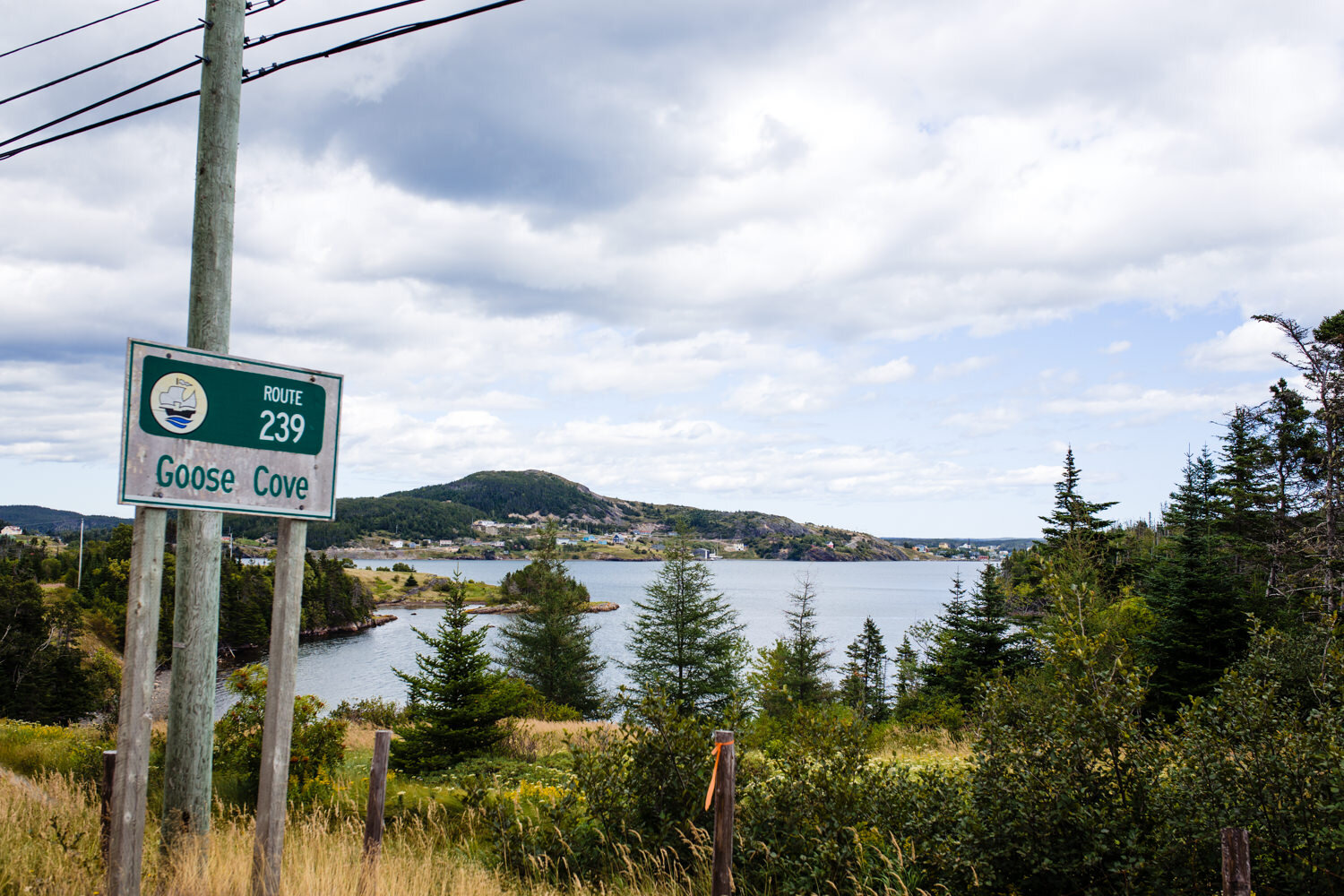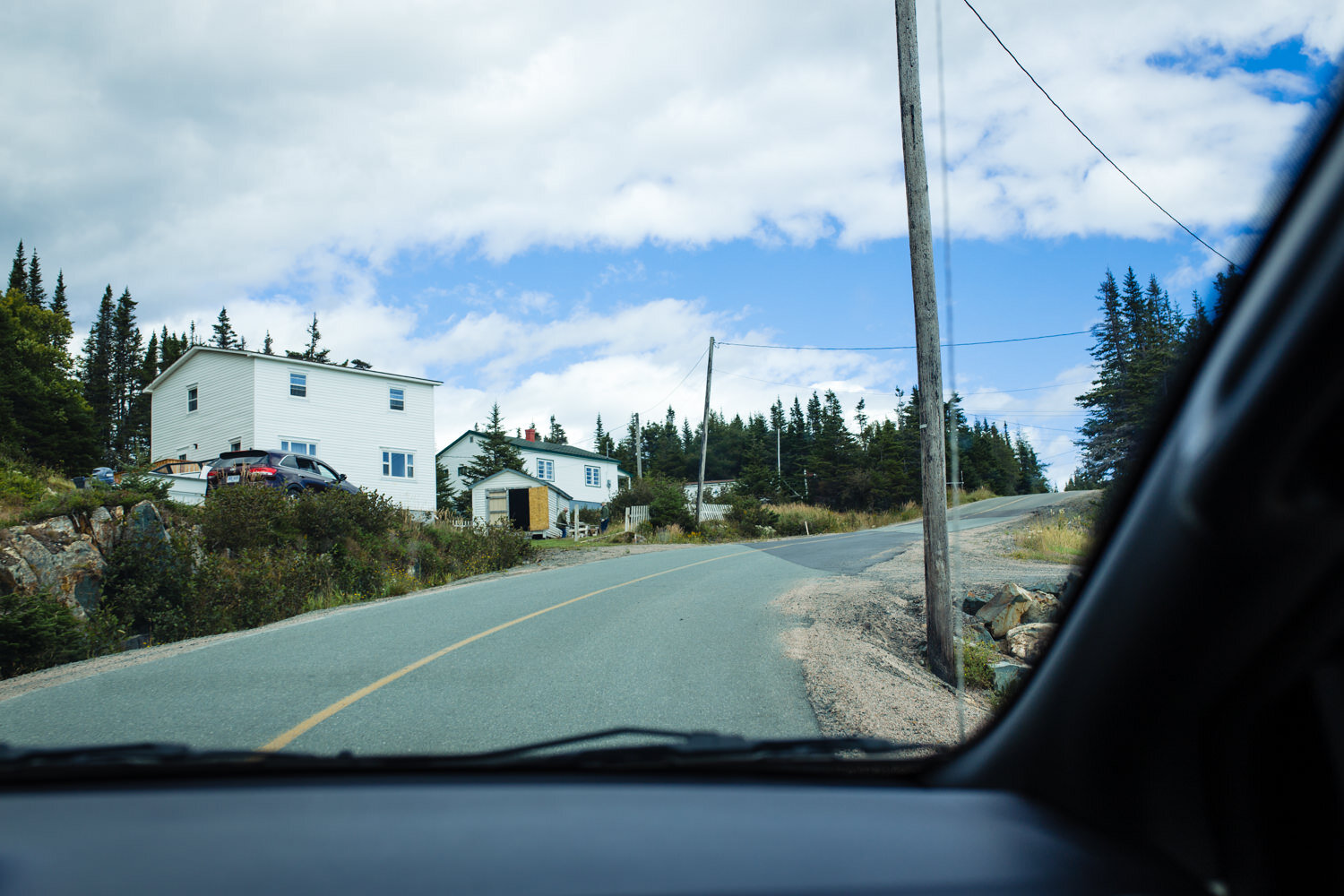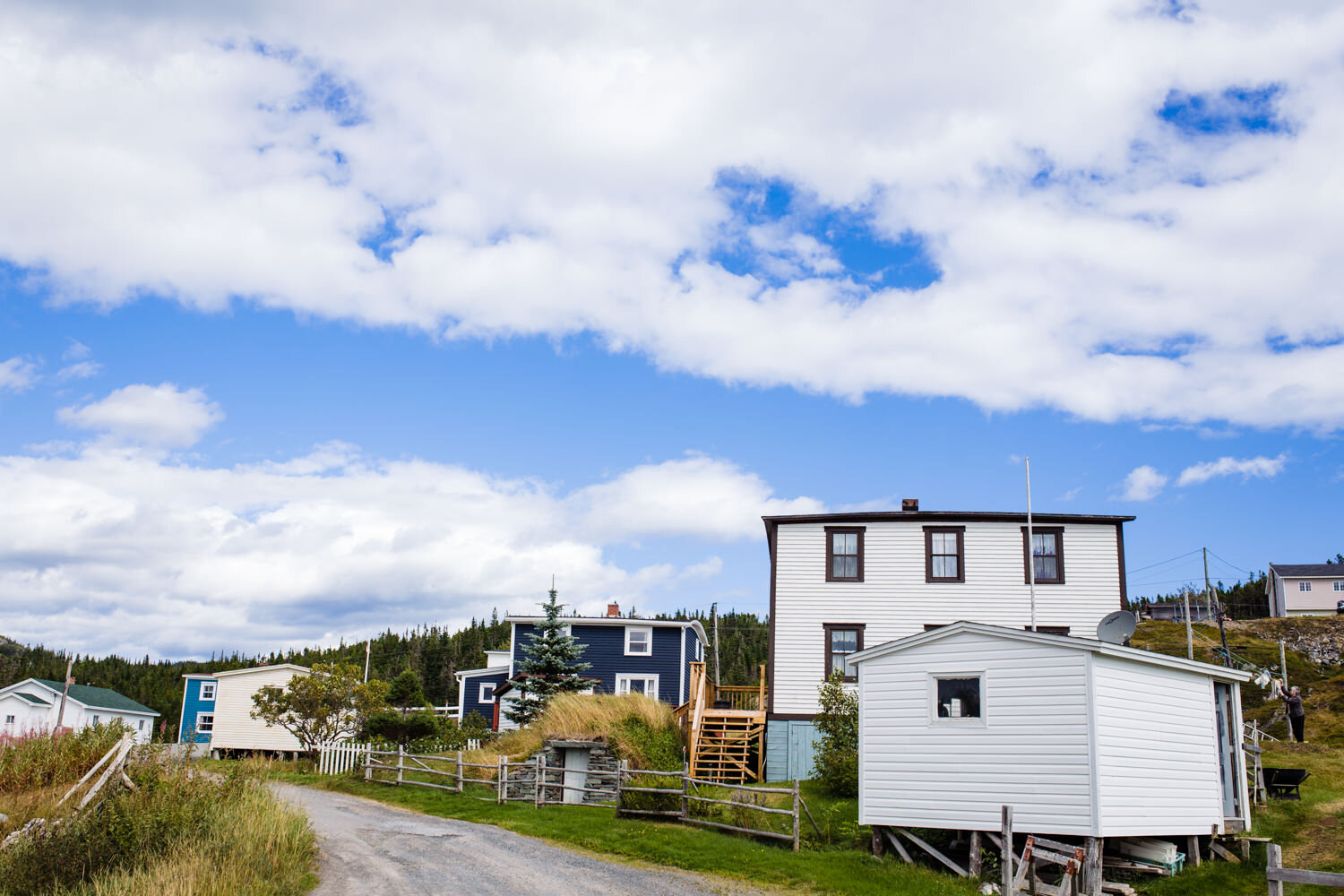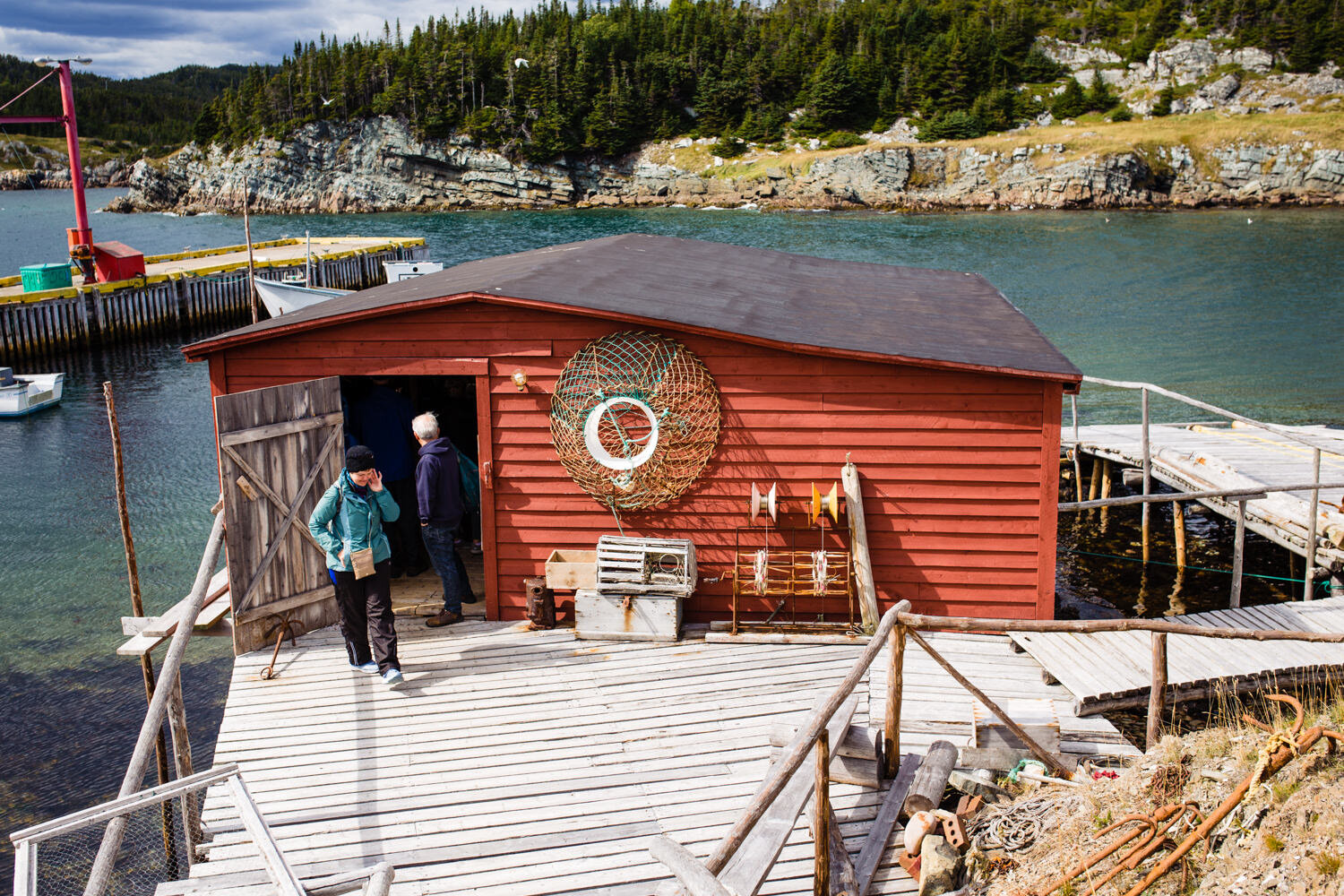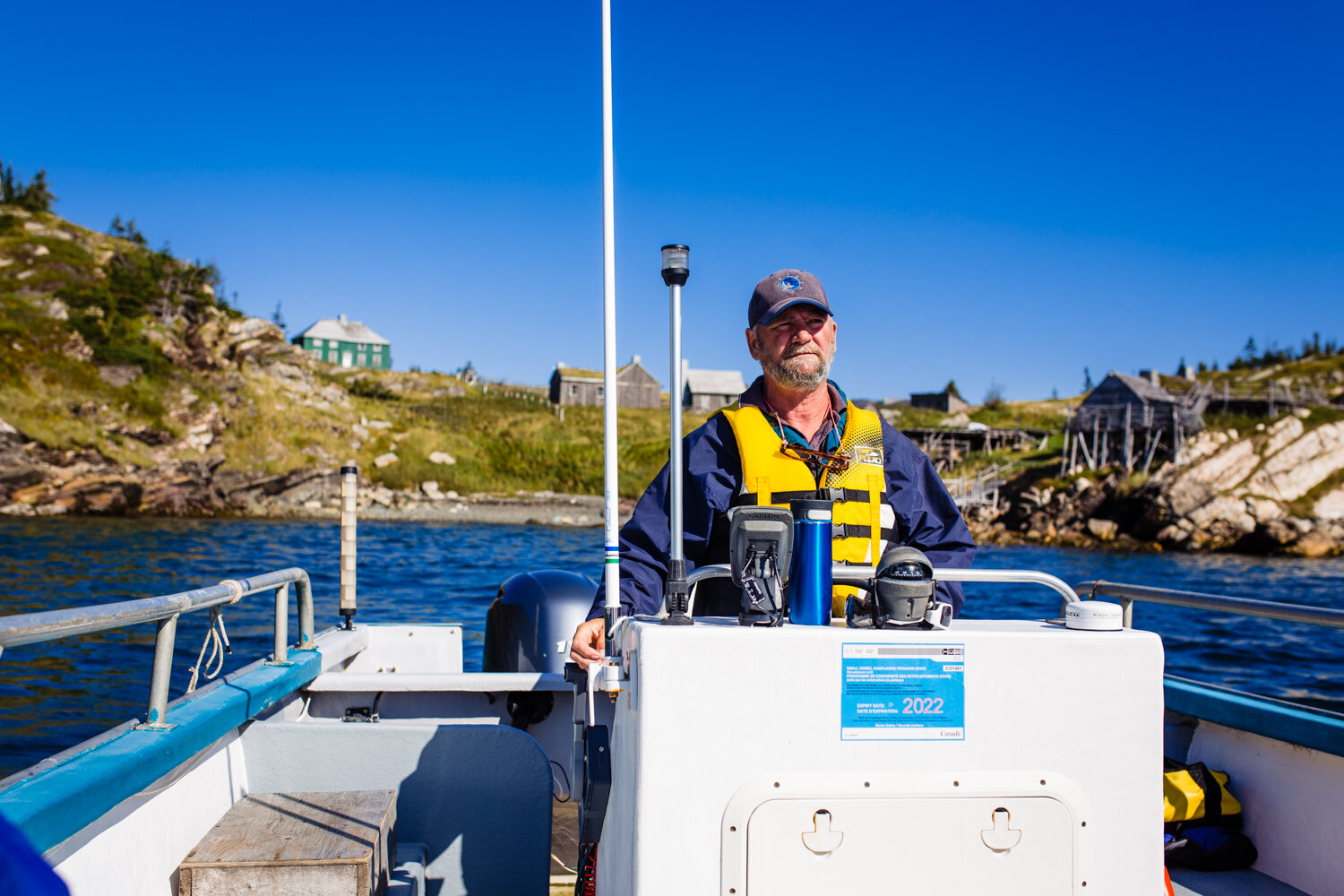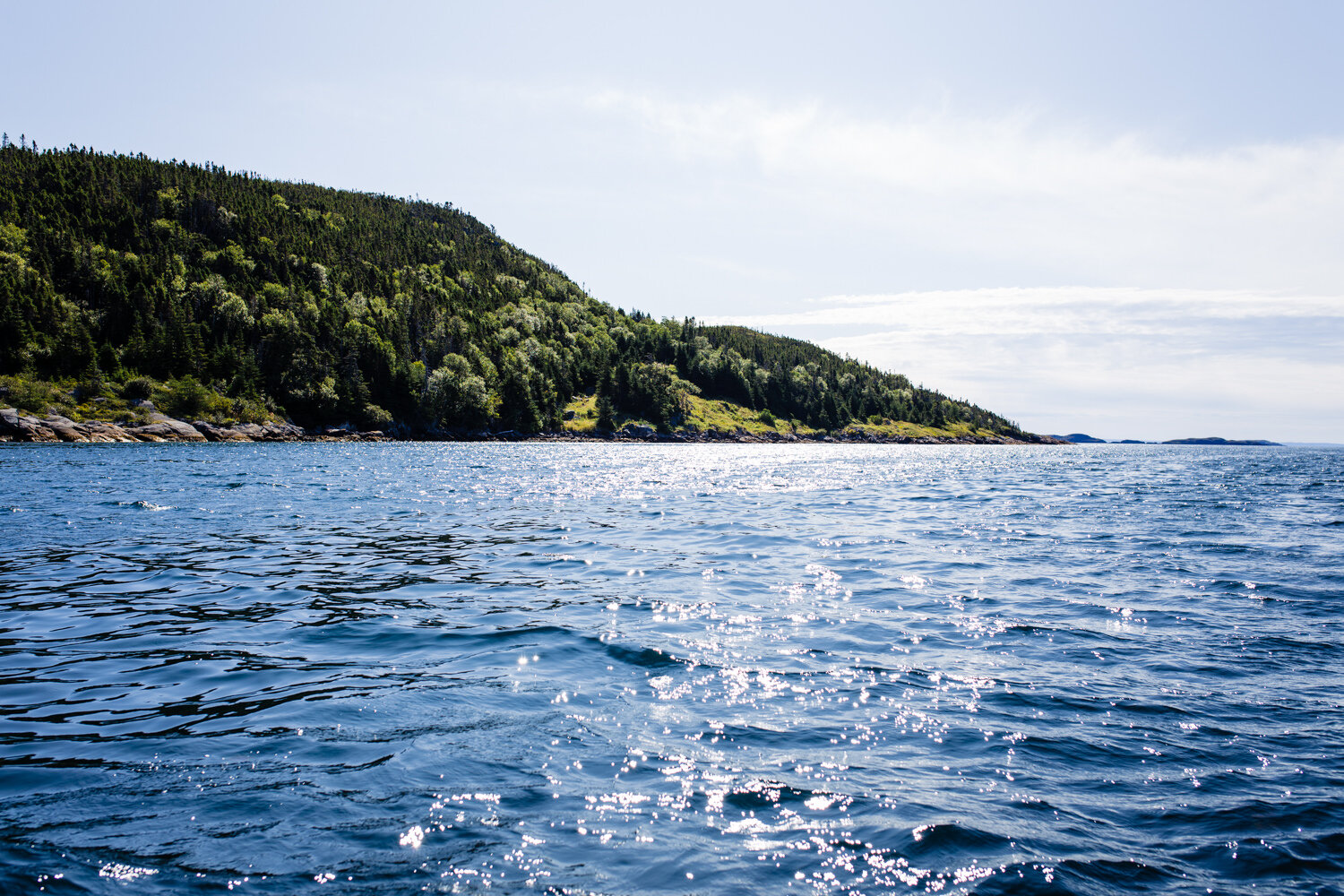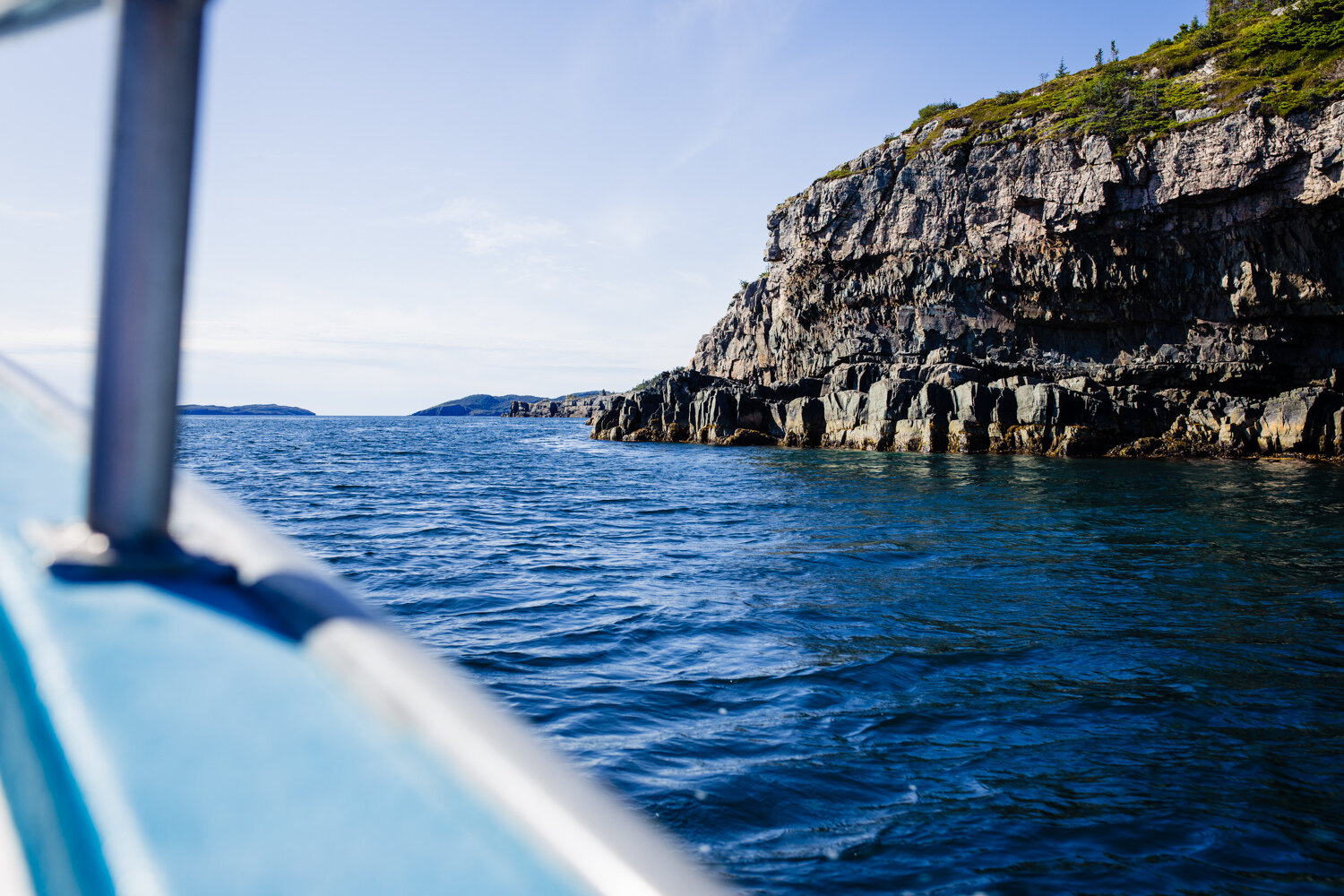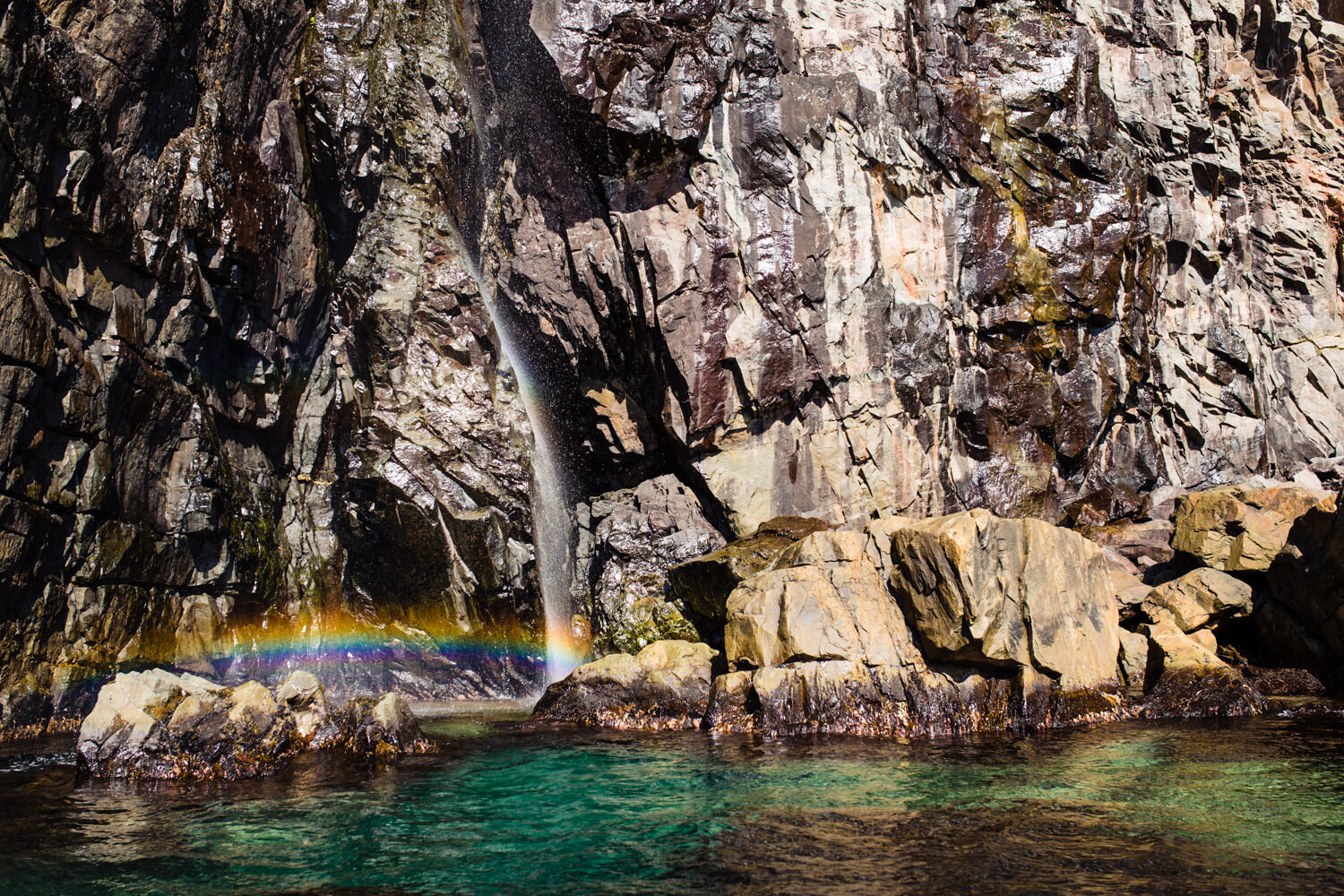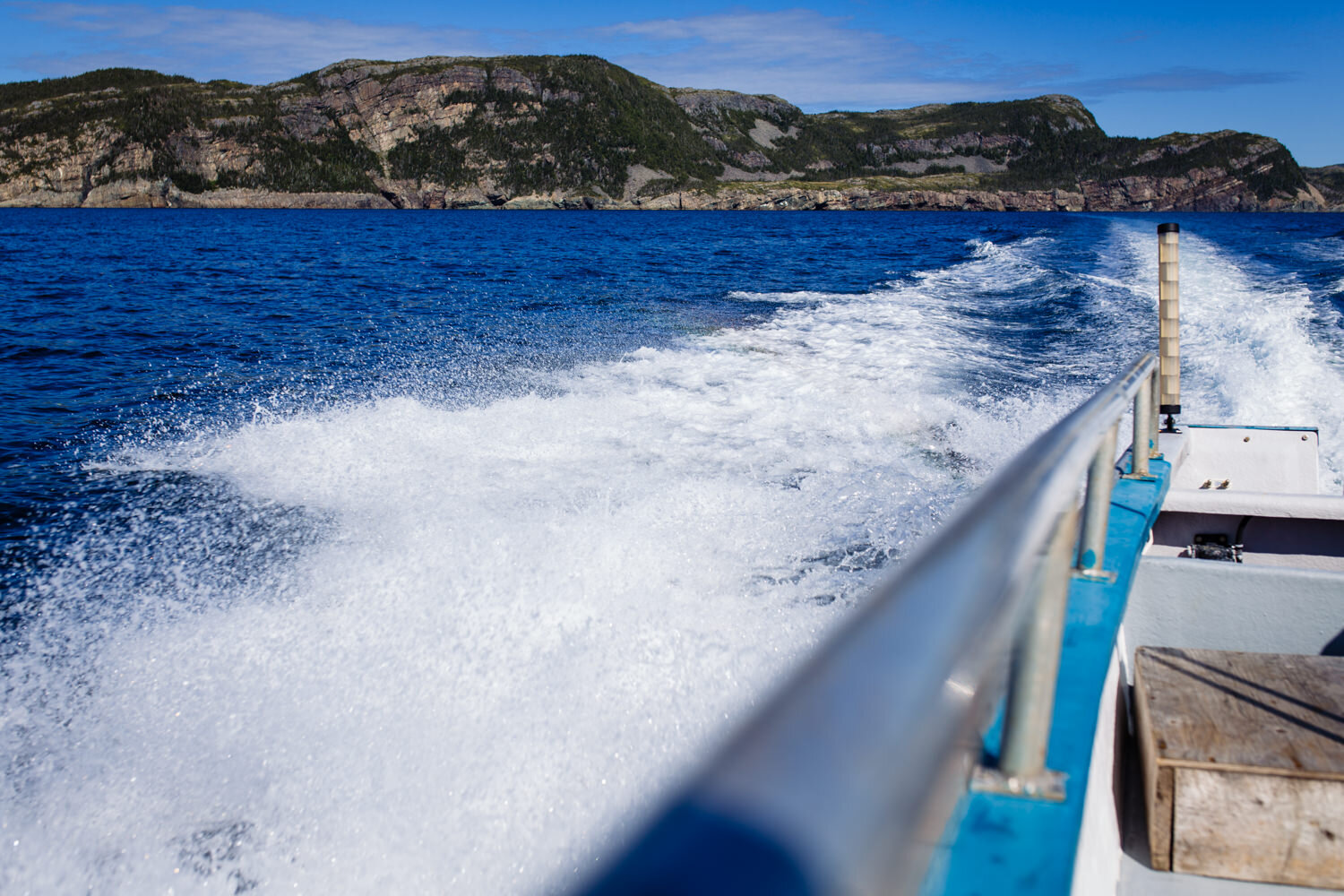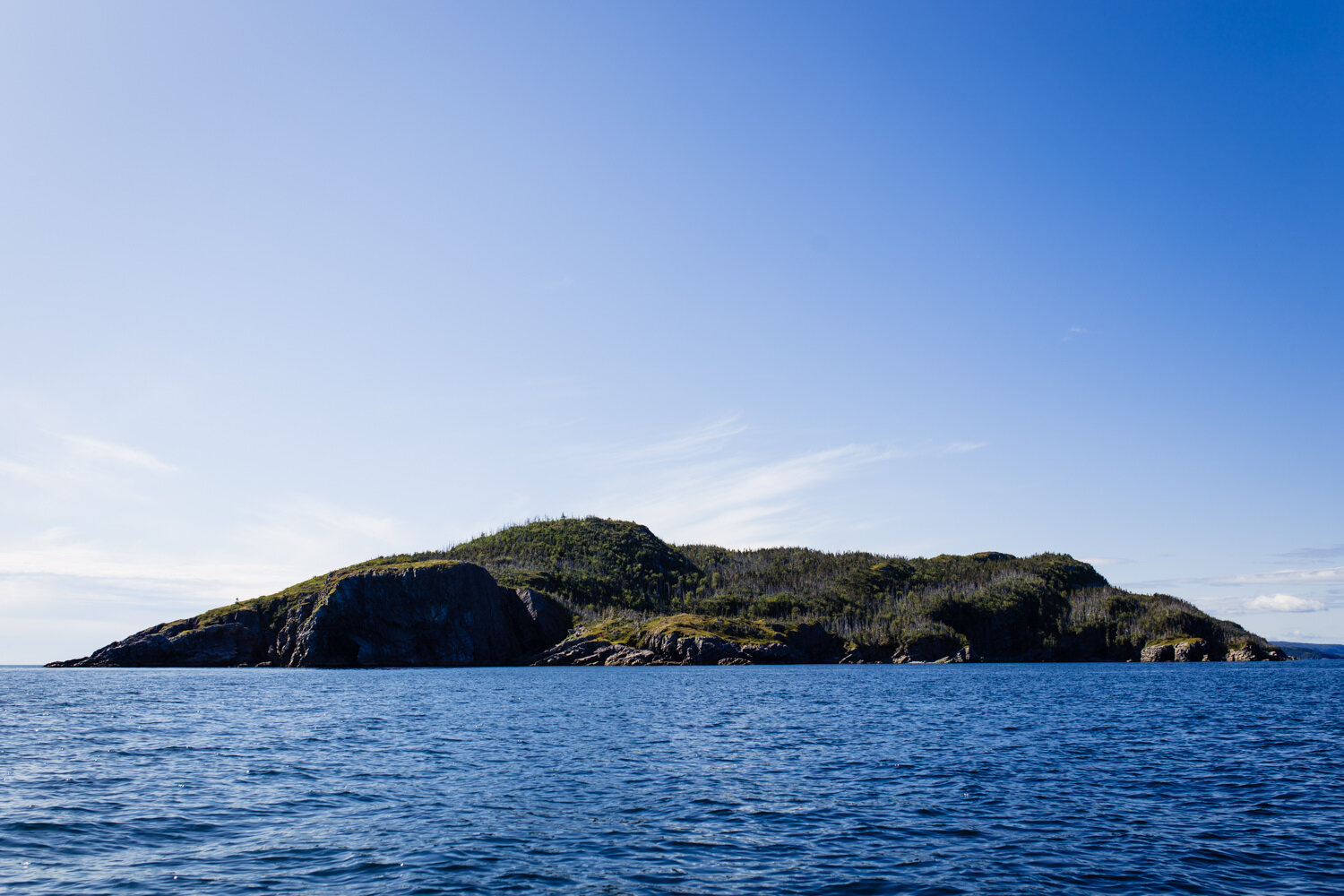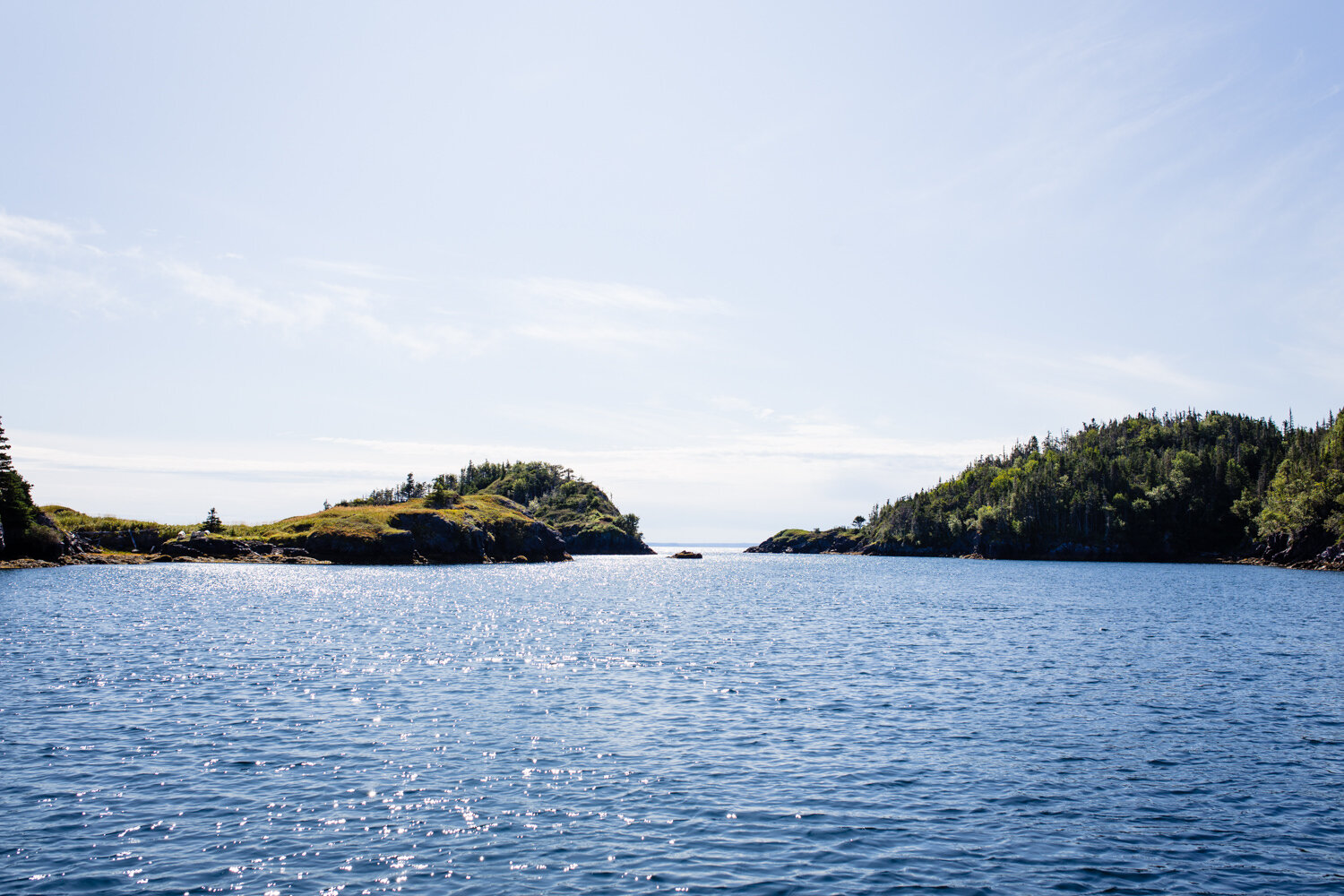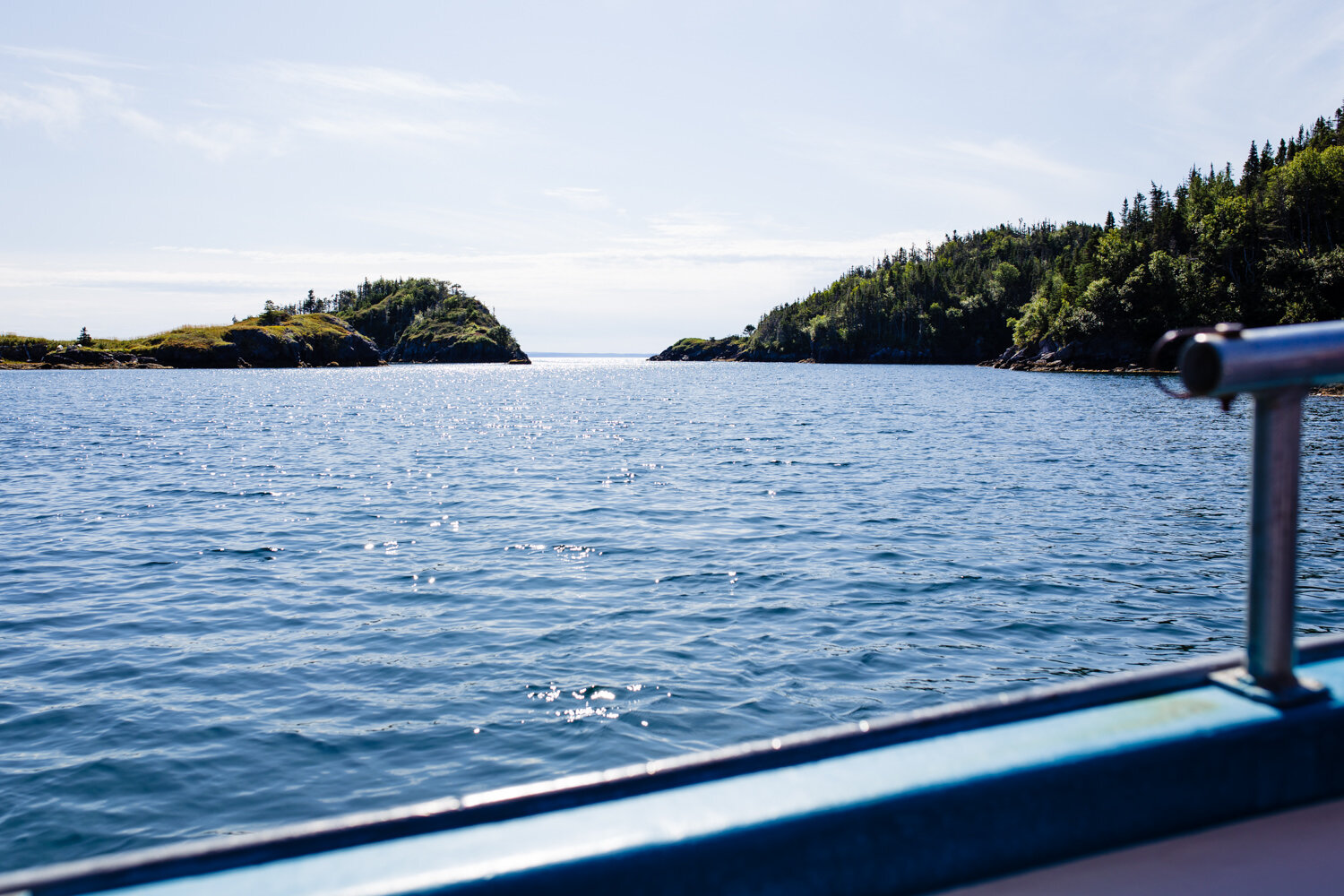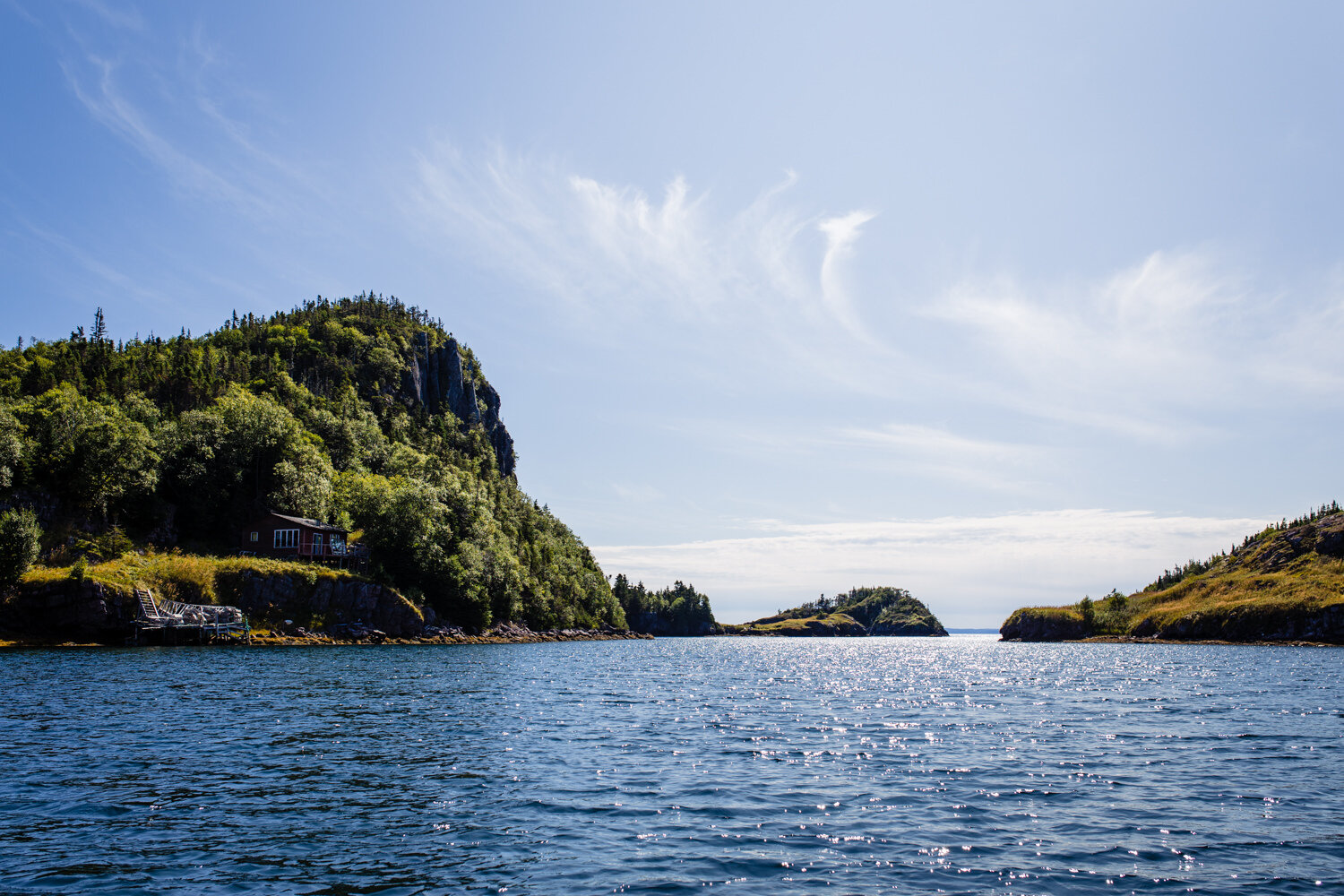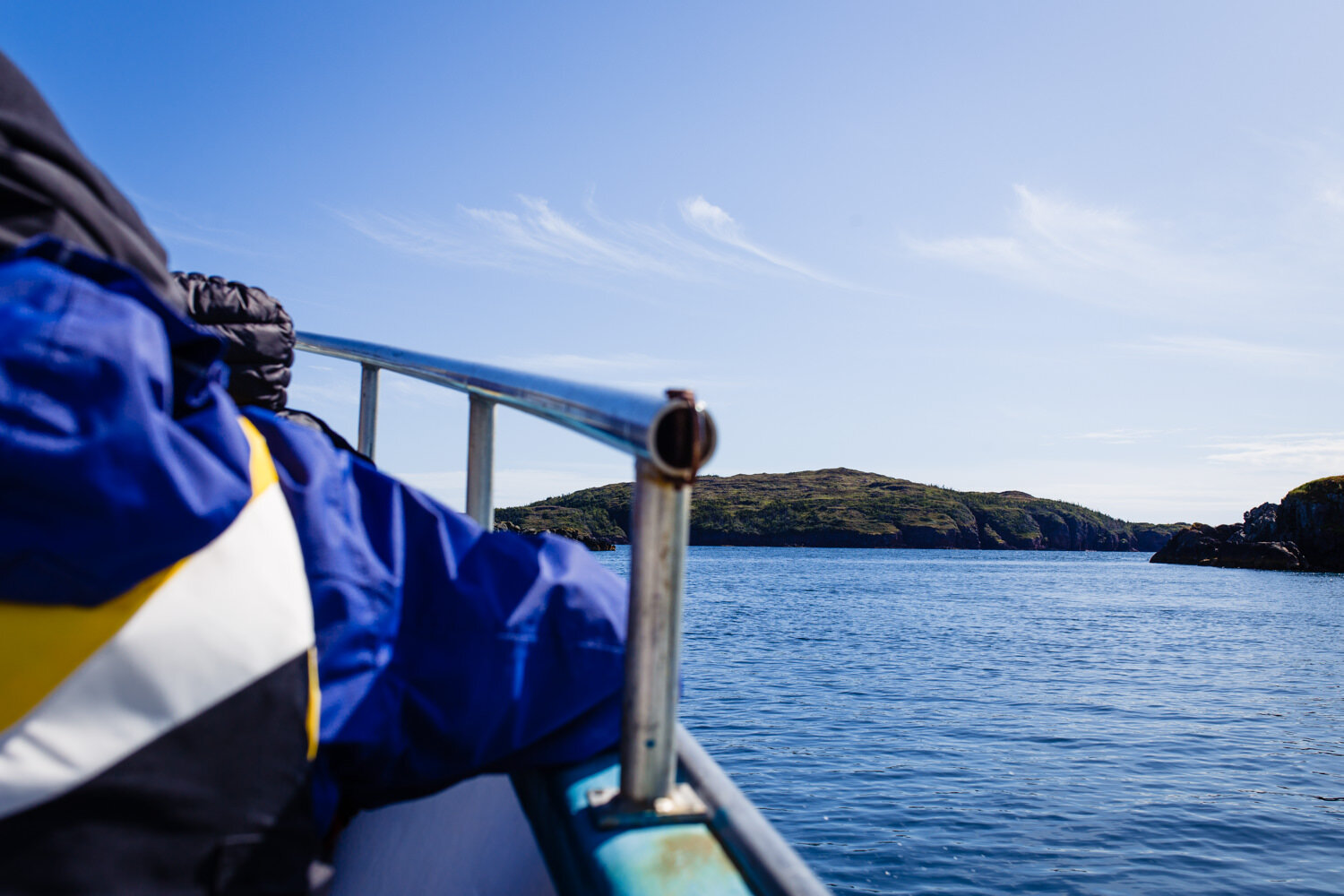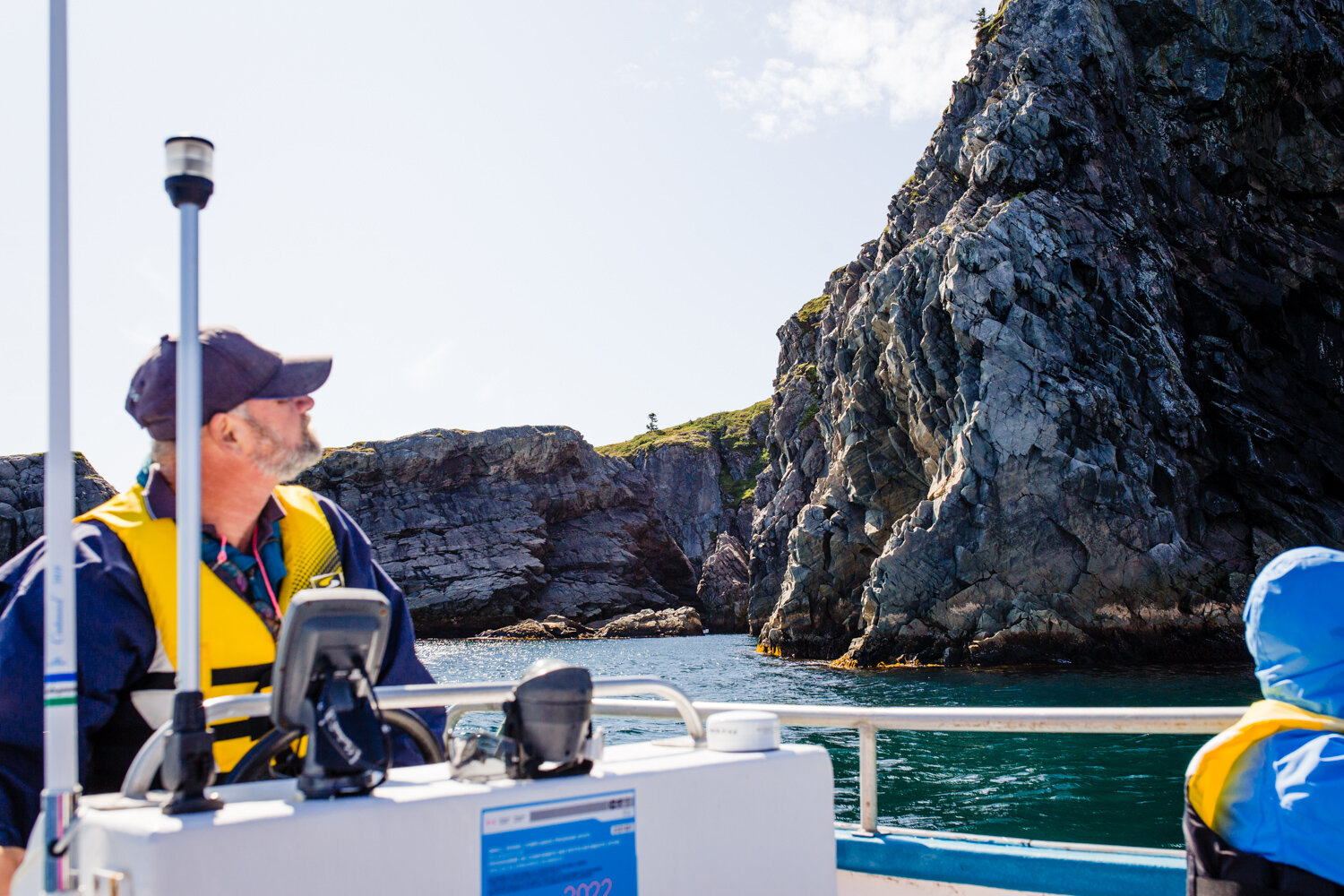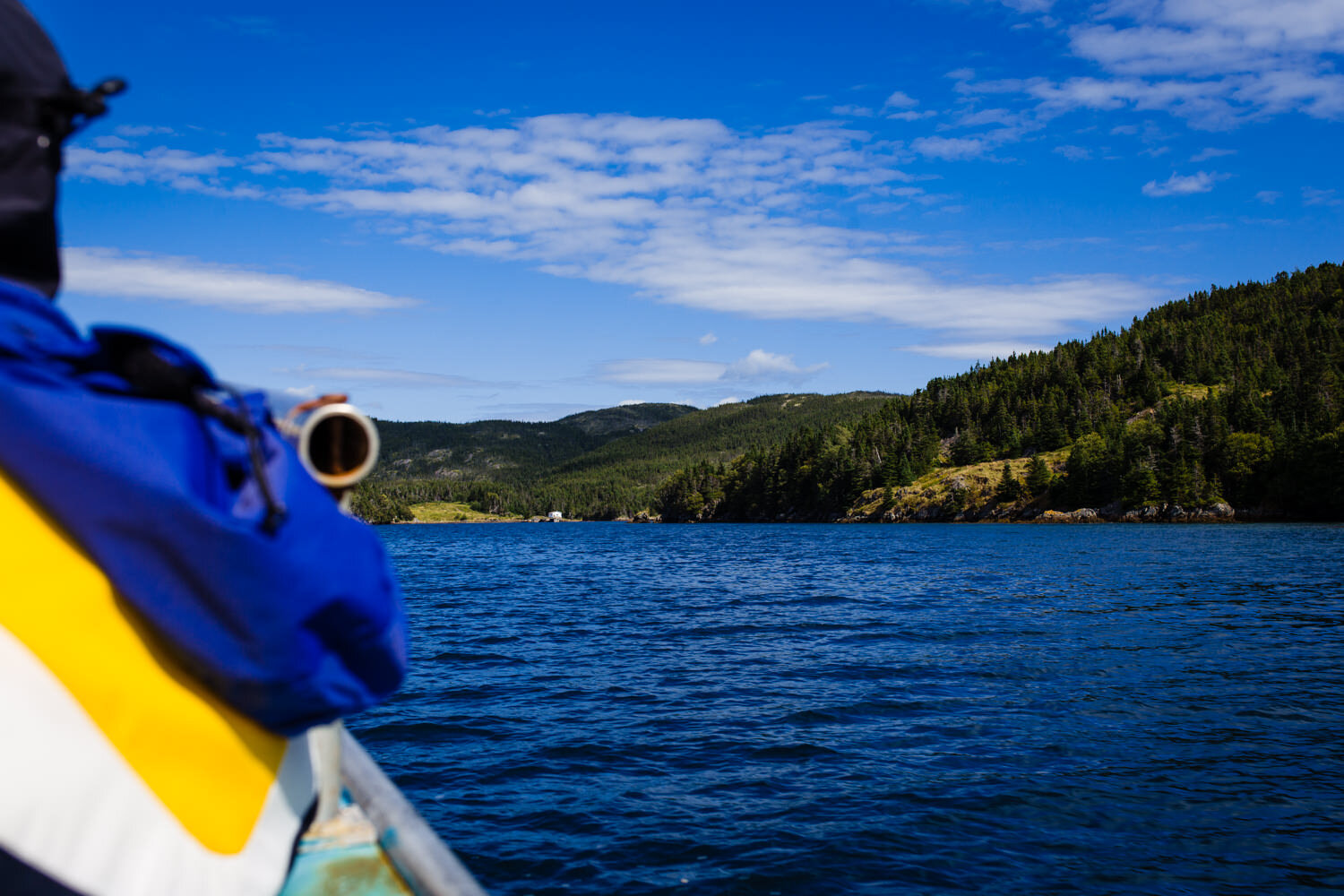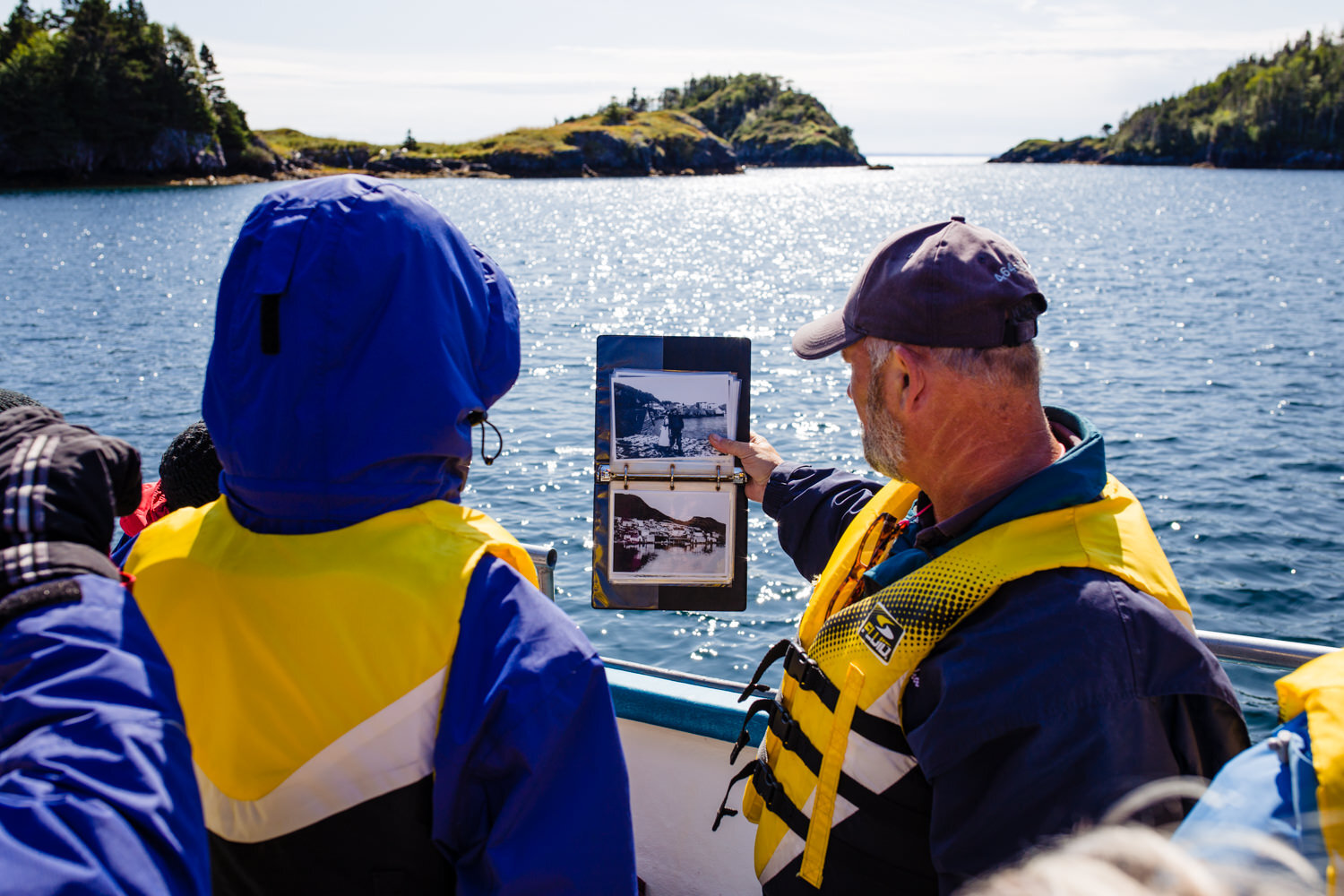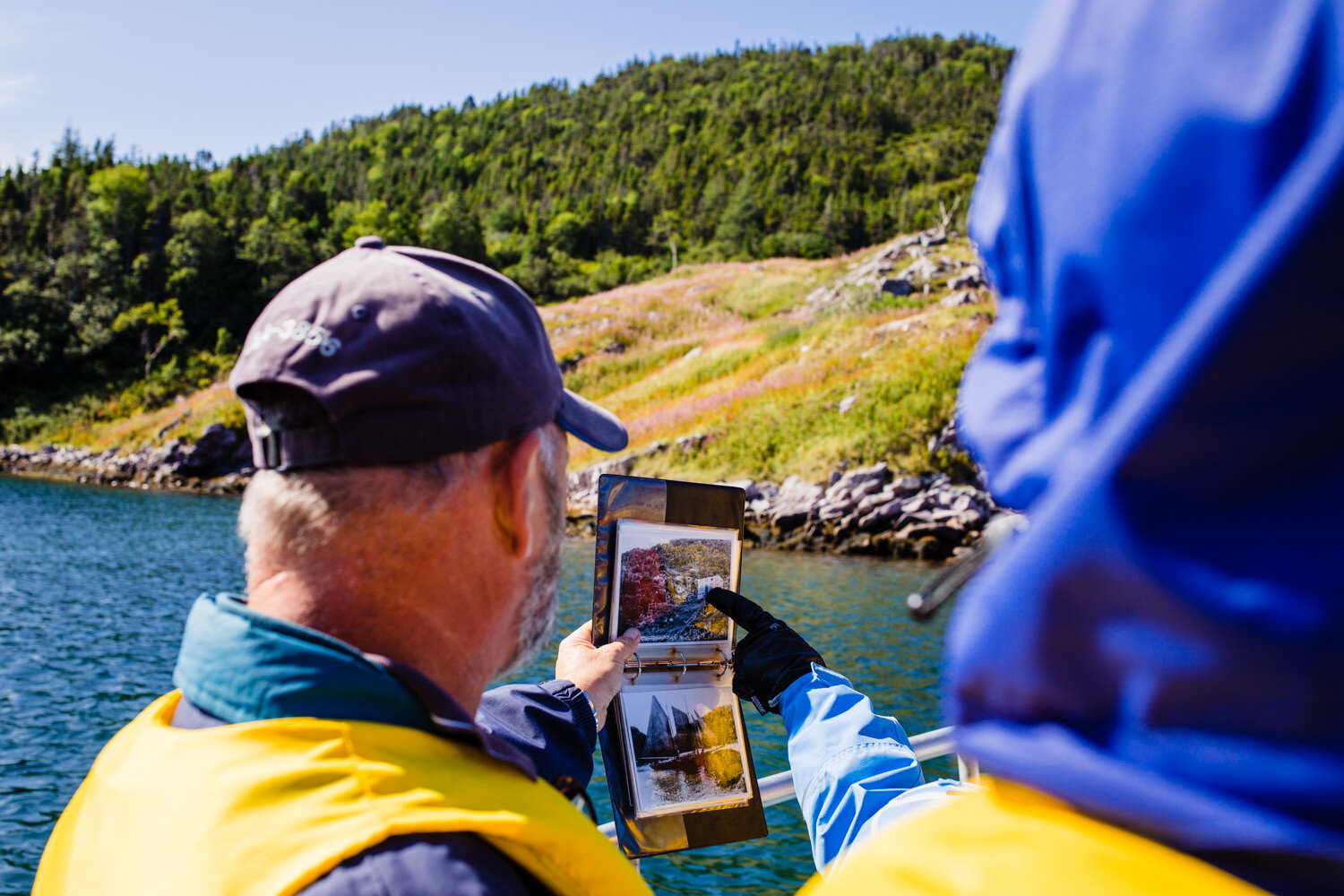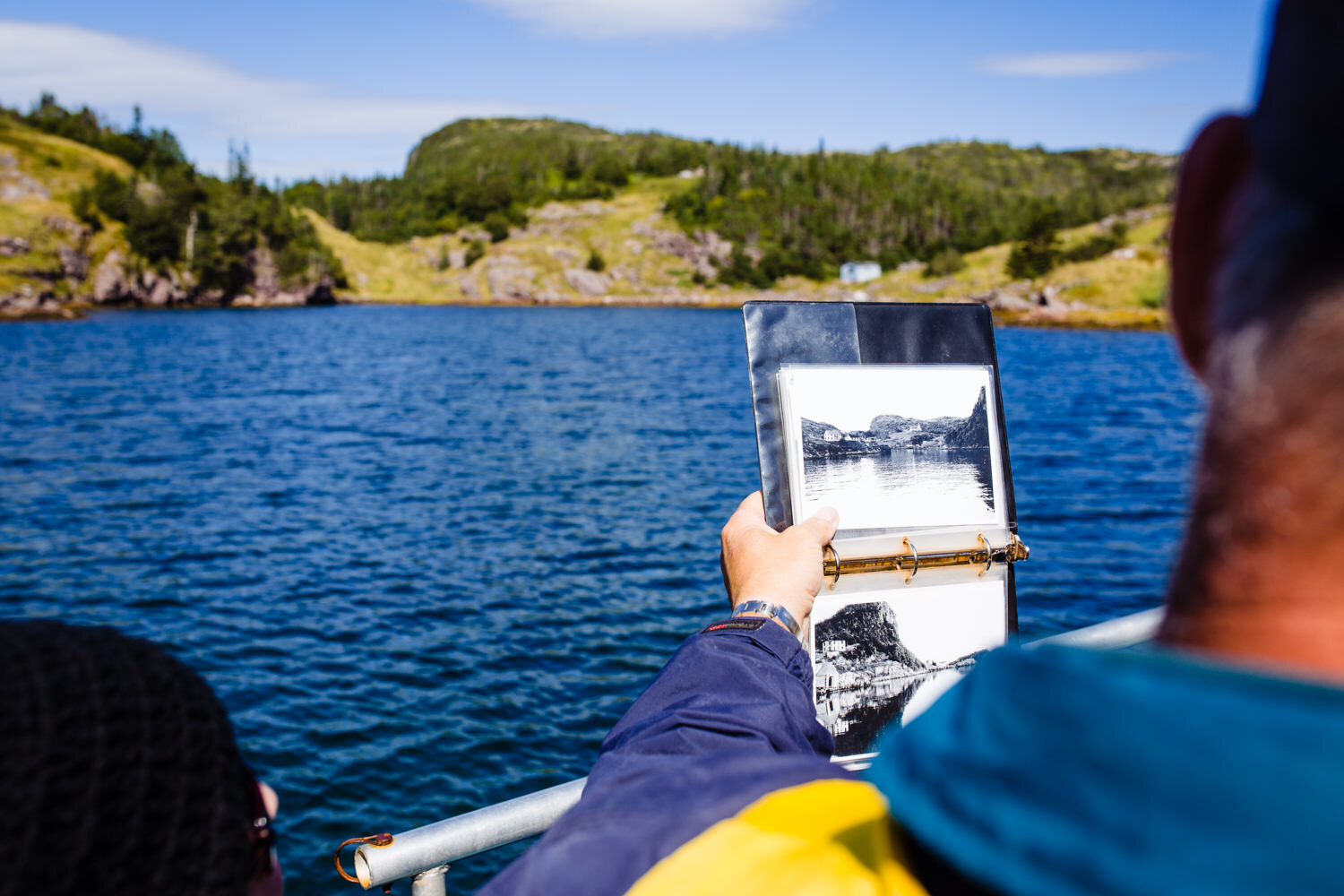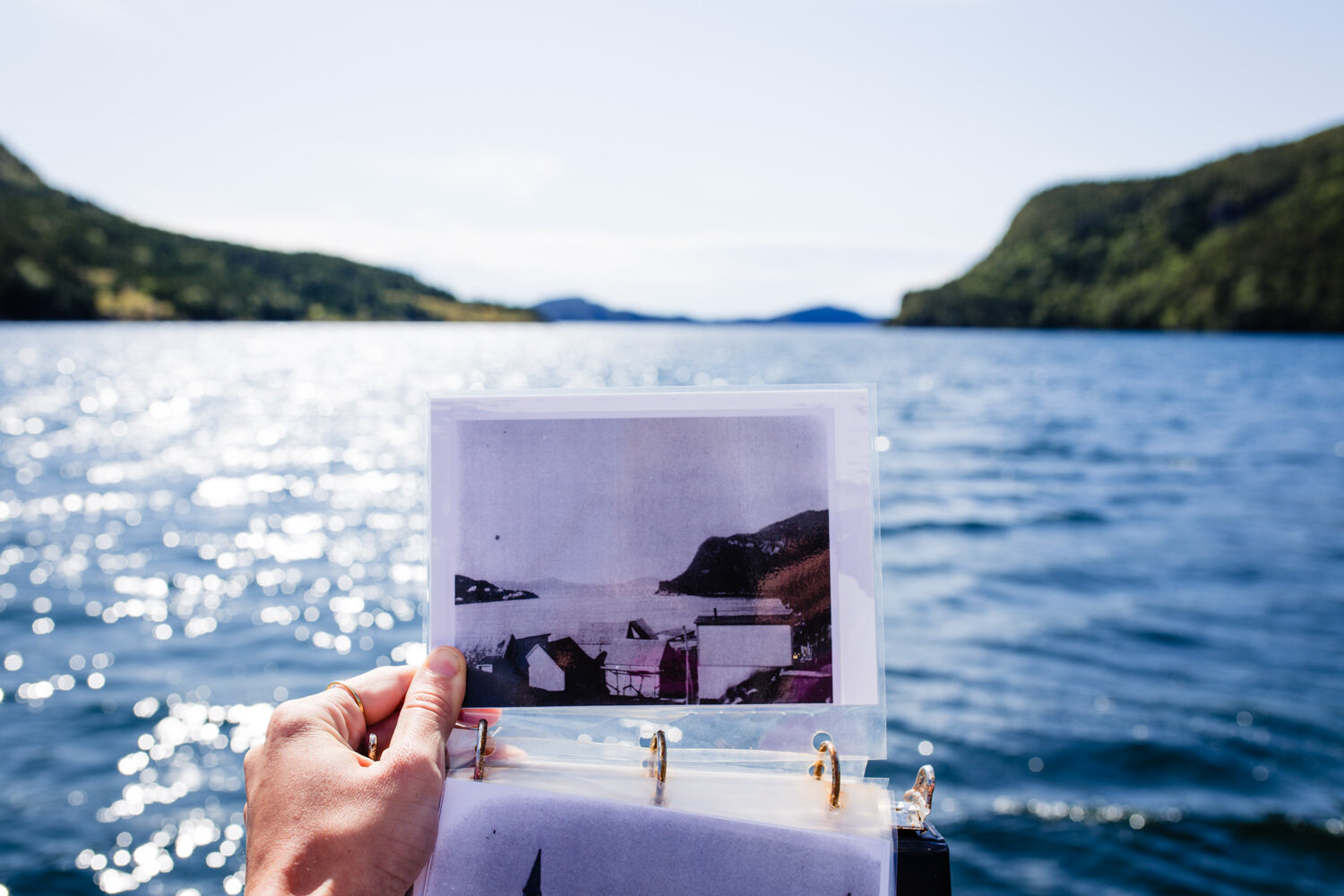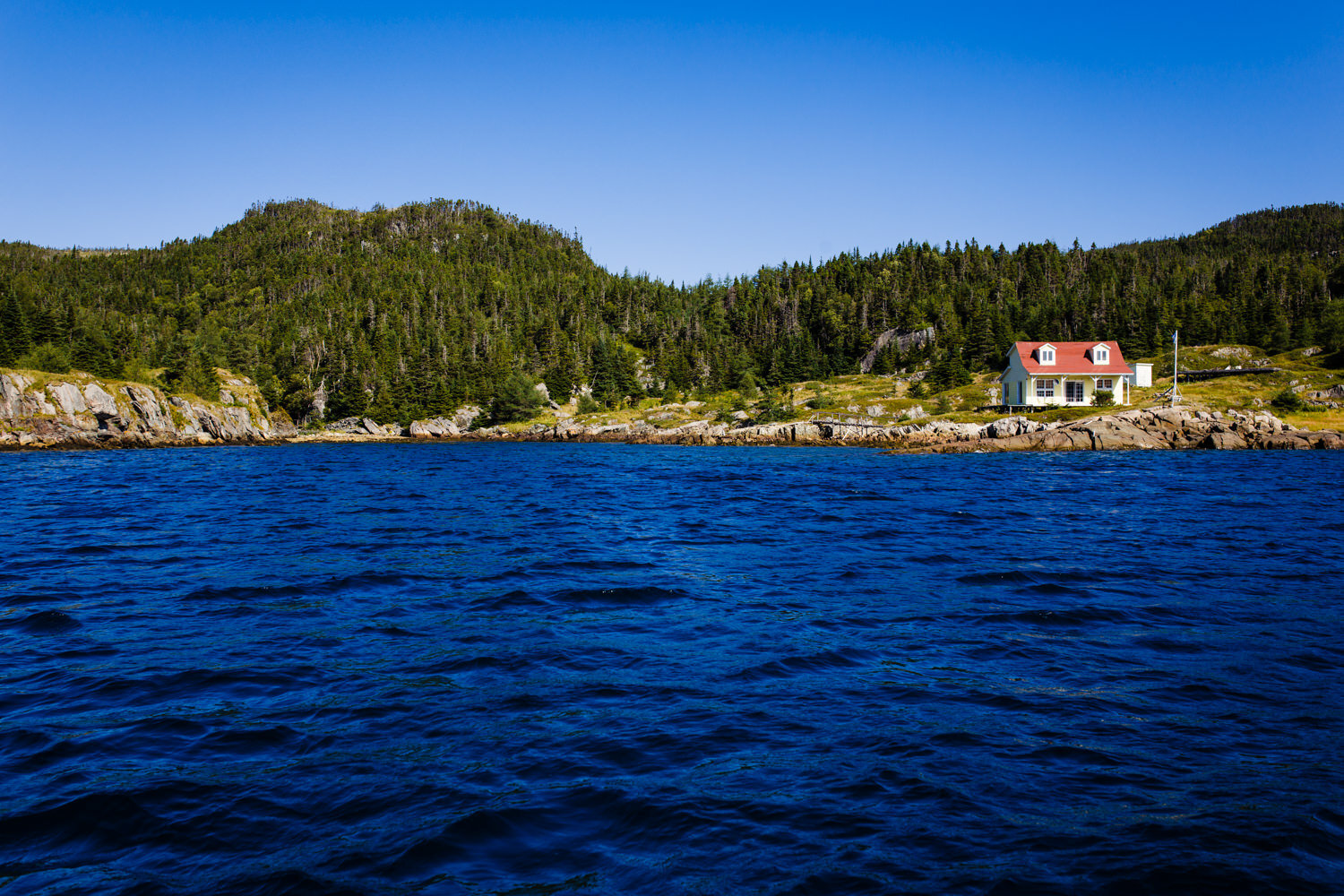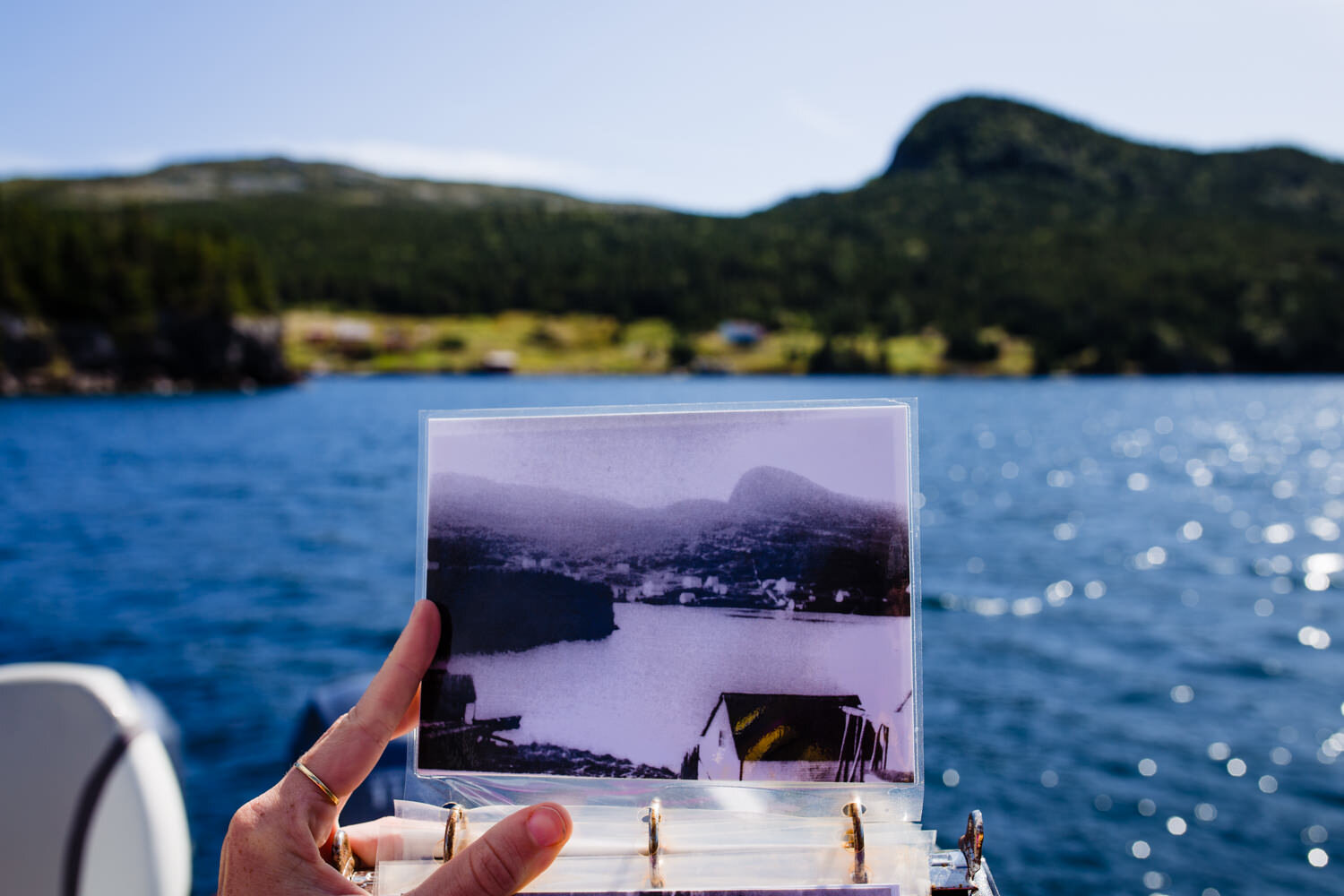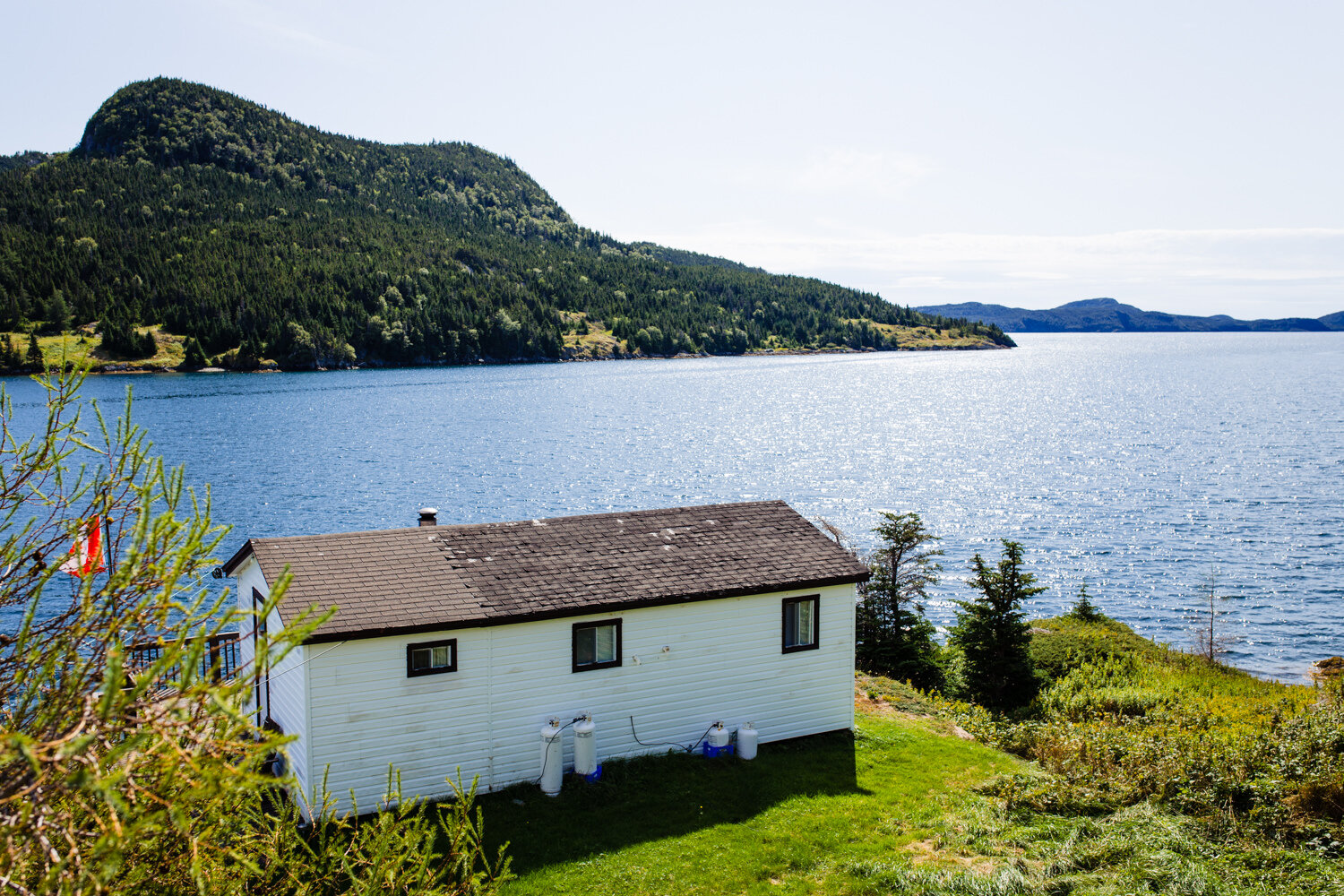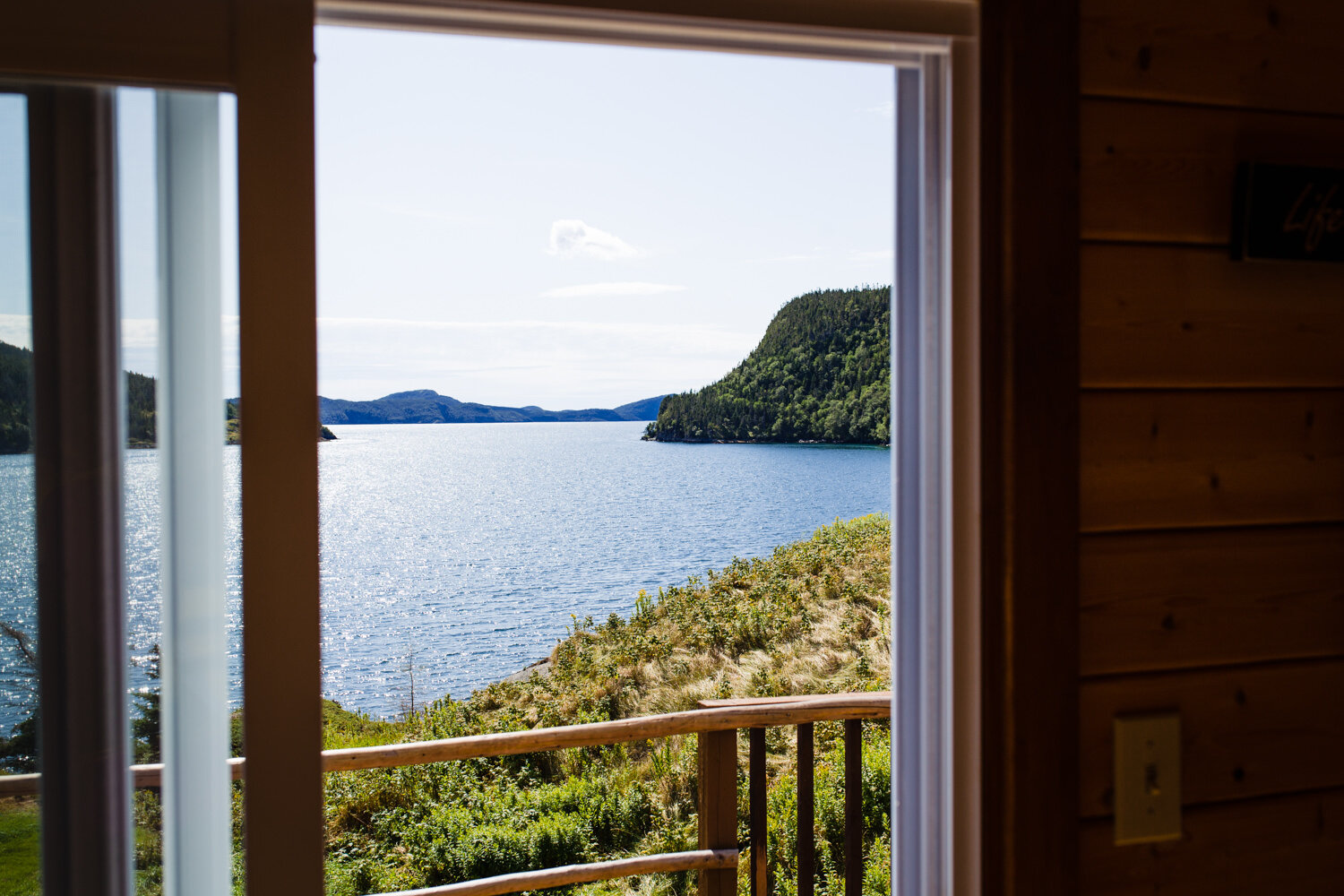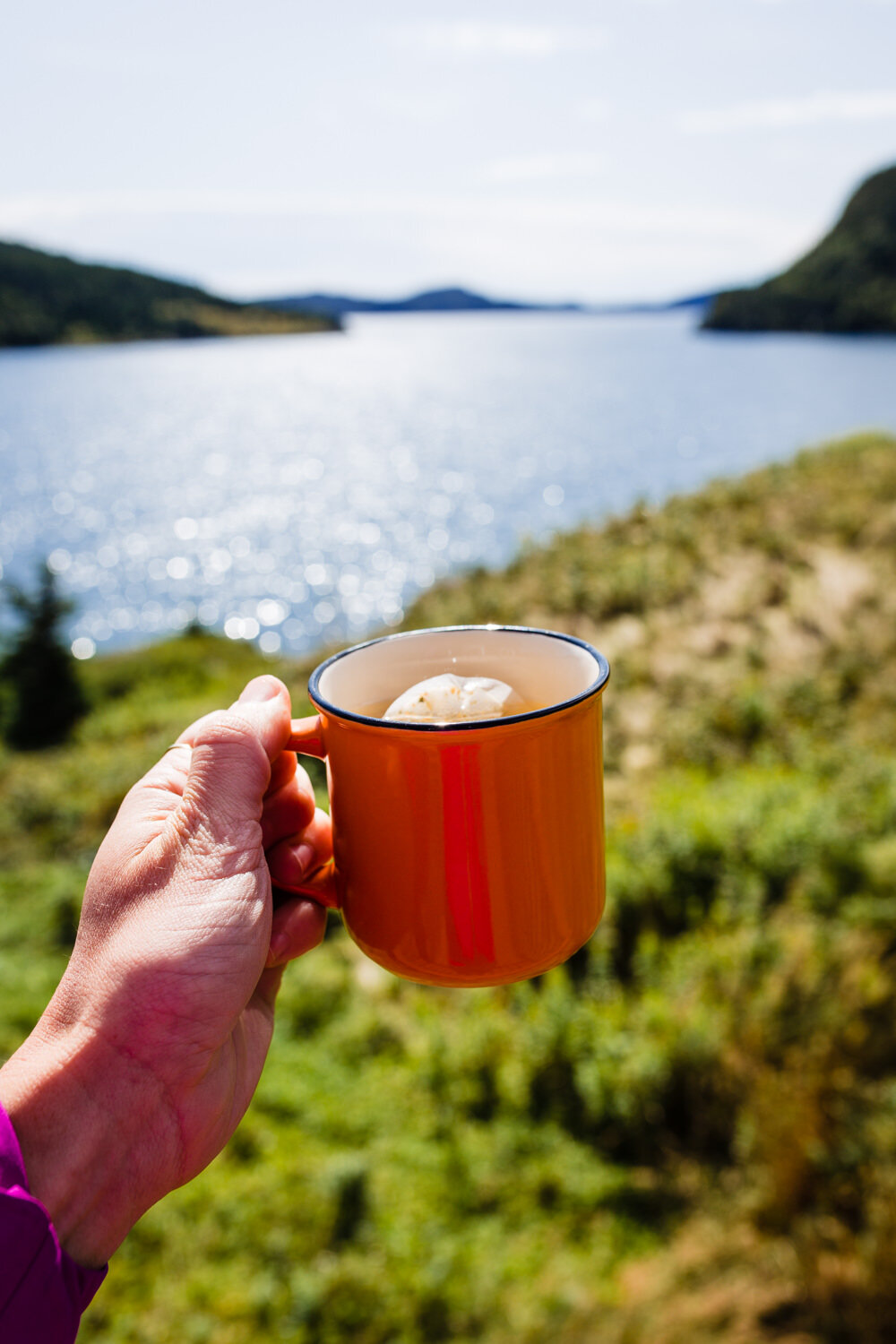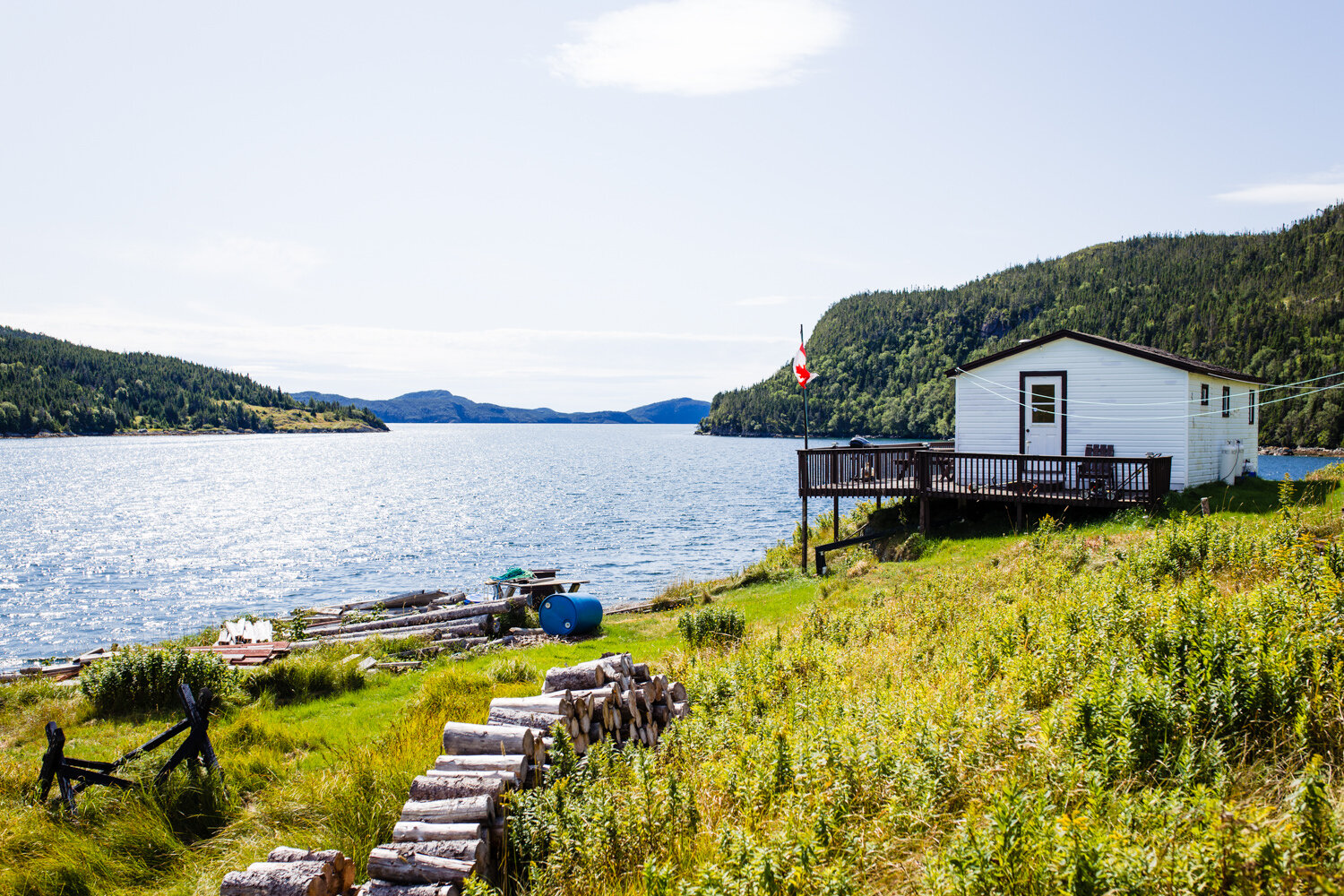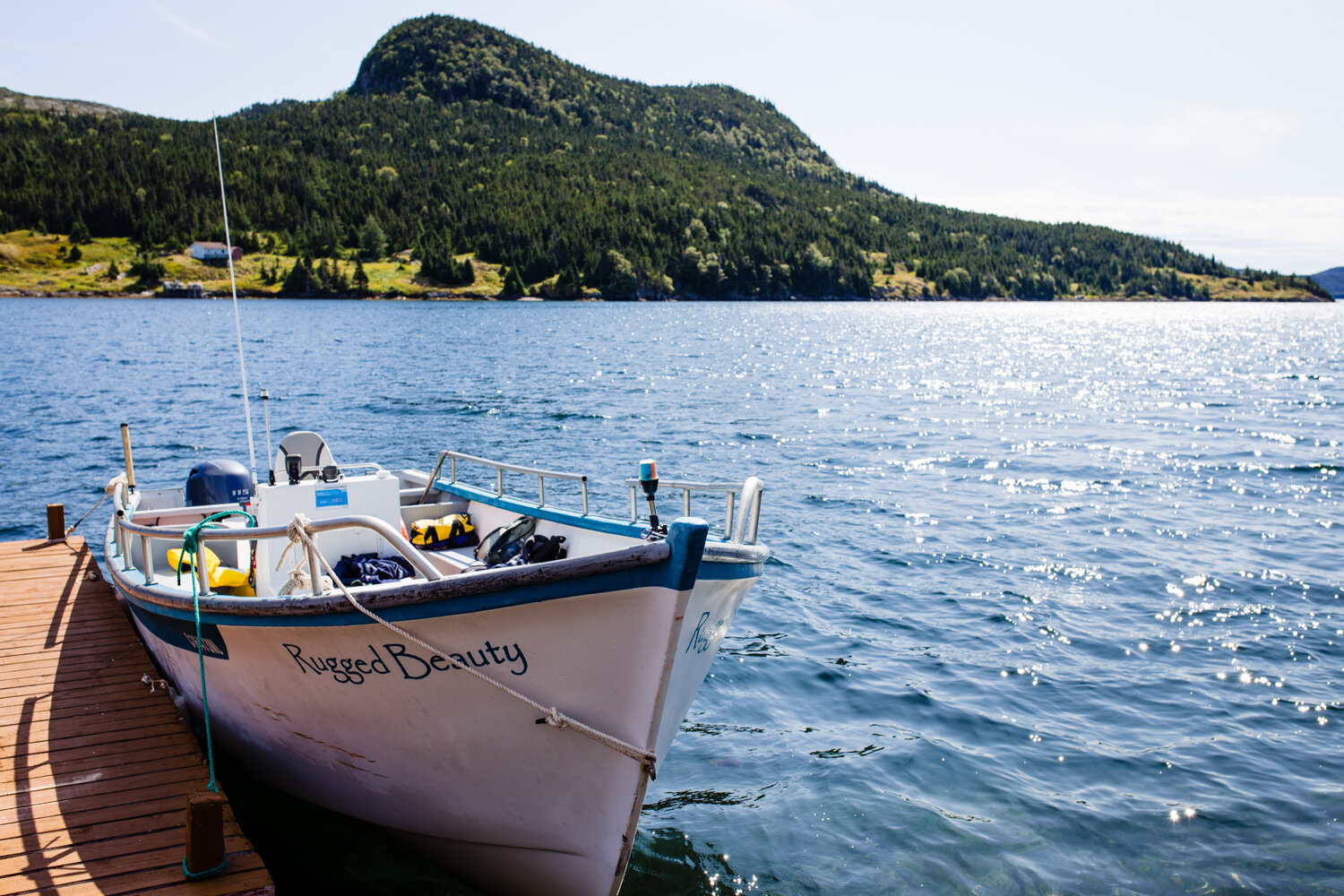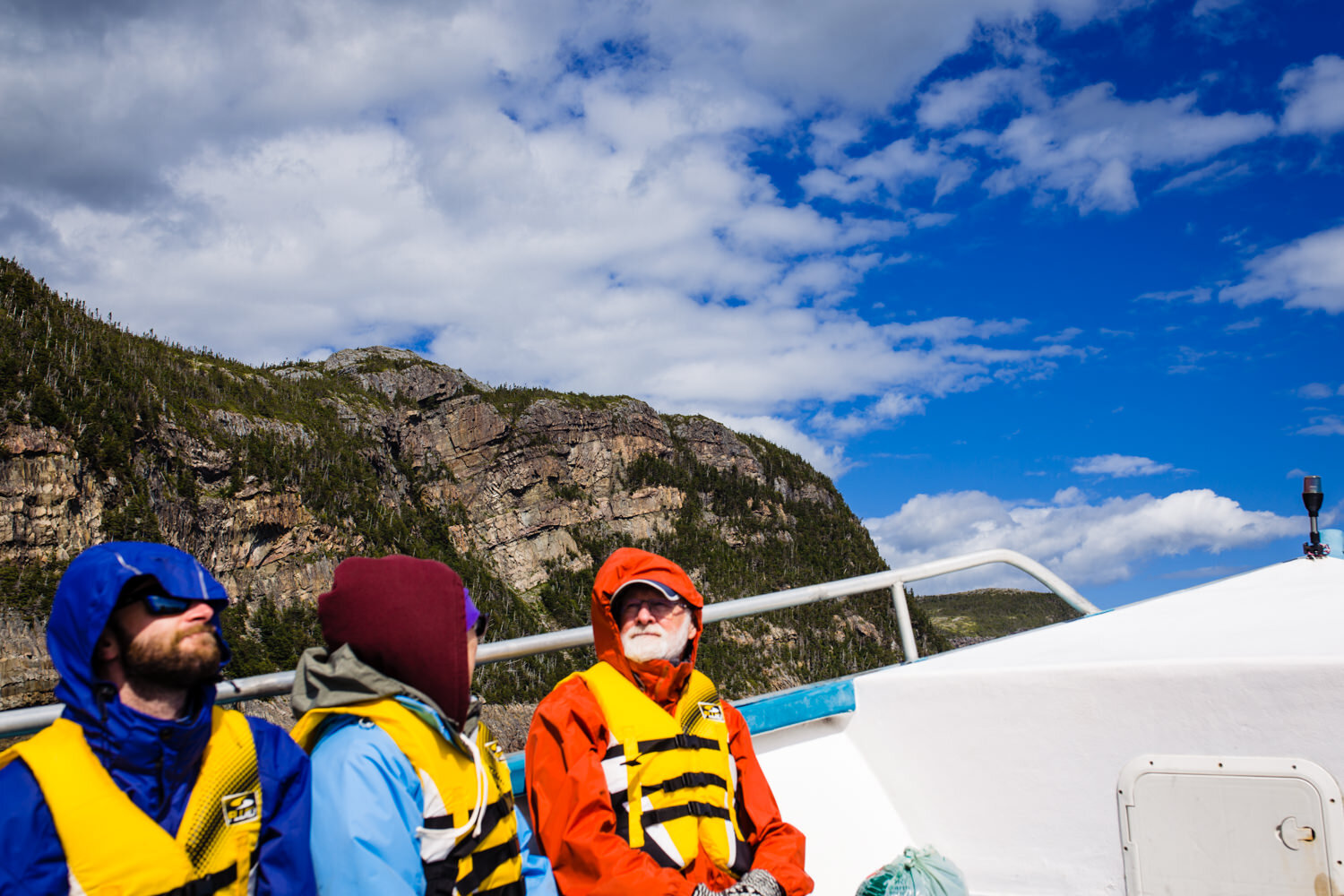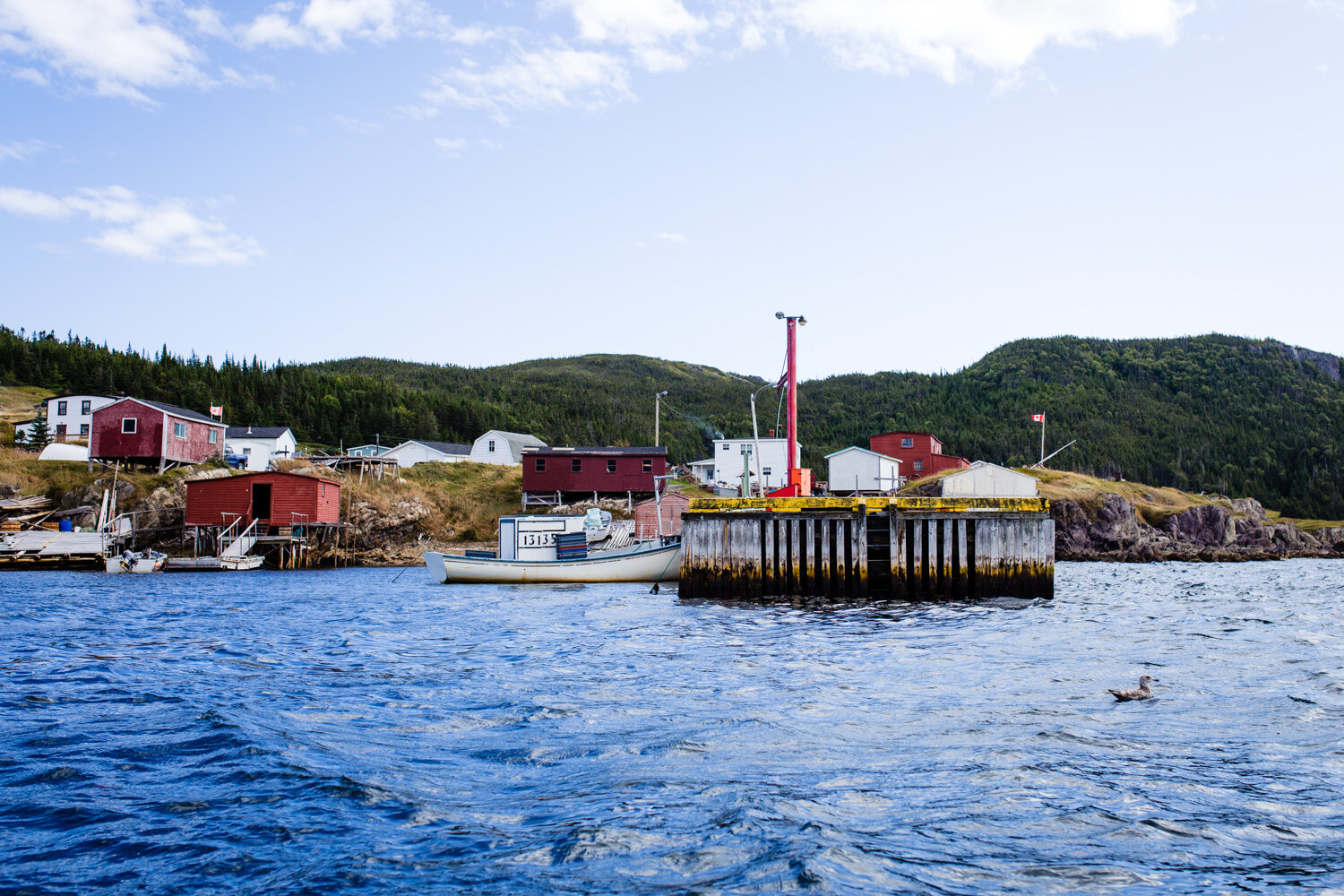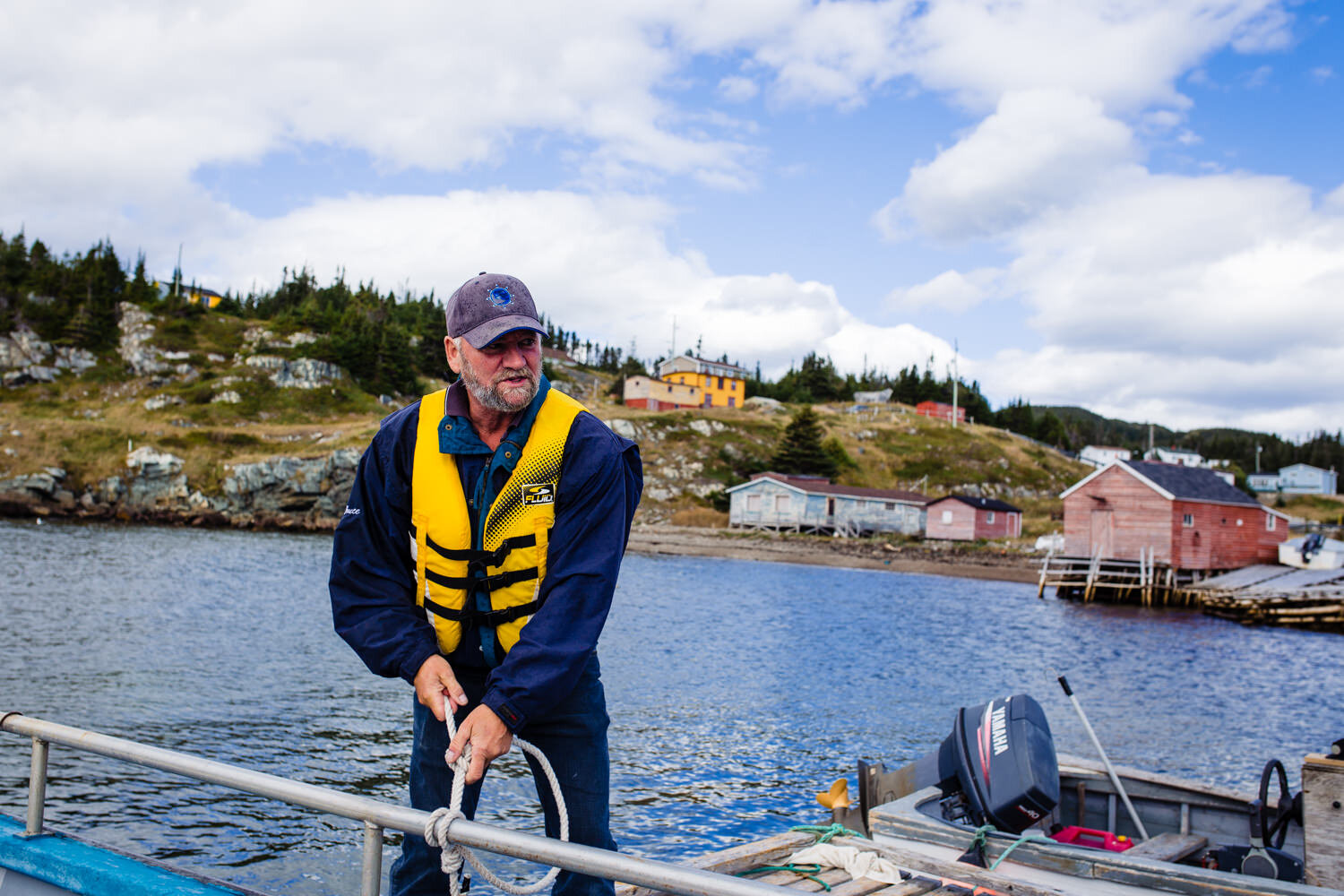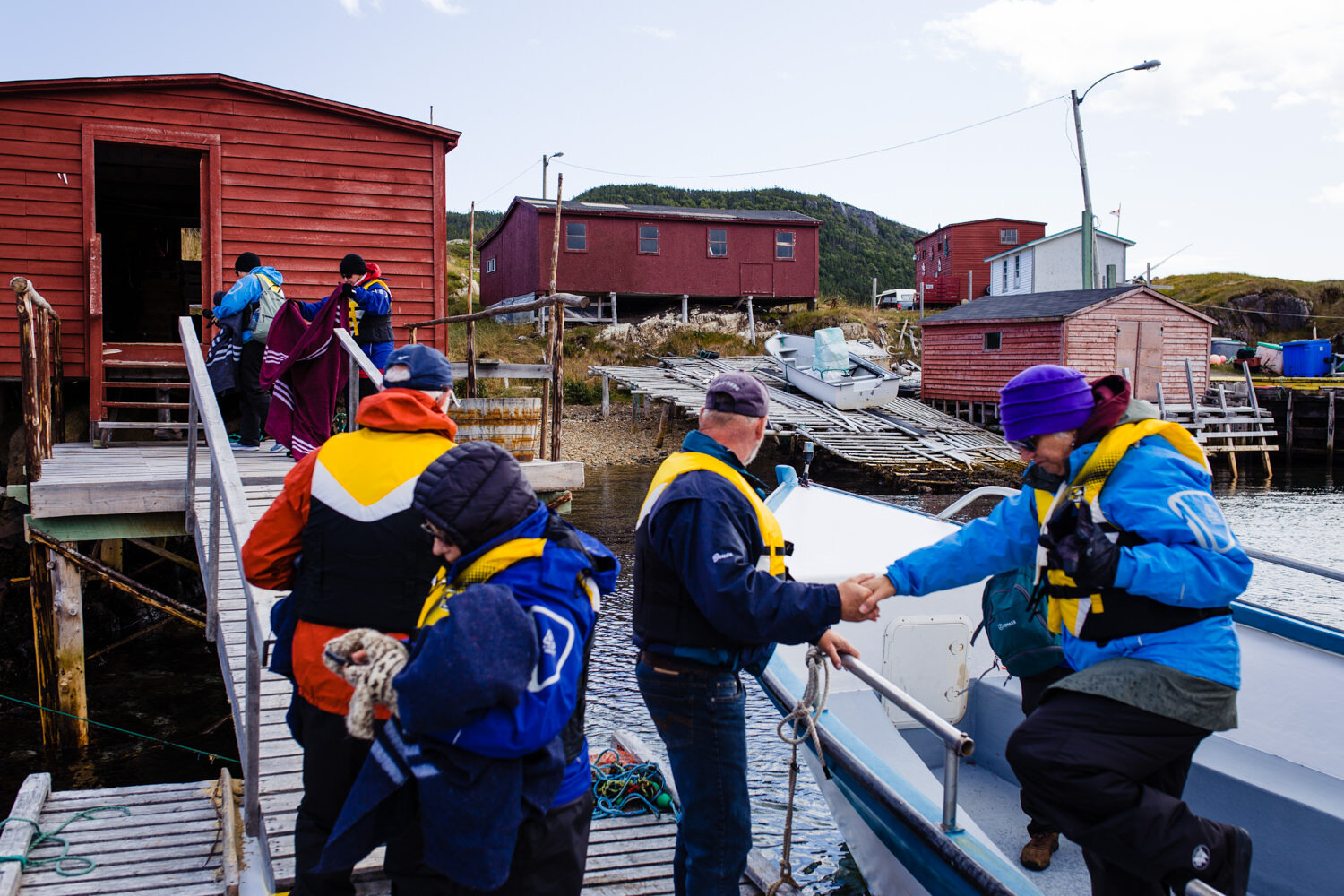Revelstoke Travel Photographer - Newfoundland Rugged Beauty Boat Tour
Katee Pederson
While visiting Newfoundland for my first time there was one activity I wanted to be sure to check off my list - a boat tour. Sea kayak, sailboat, or an old fishing rig - I wasn’t picky, I just wanted to get on the water! Unfortunately I also happened to fly onto the rock just as tropical storm Dorian made its approach. The winds kept many sailers, paddlers, and fishermen on land the entire weekend I was in St. John’s, so I was out of luck. A cruise liner had even found refuge in the city’s harbour as it anticipated the coming storm.
The weekend passed and the high winds went with it, while I found myself traveling to a hostel on the Bonavista Peninsula to do some hiking with new friends. Our first night in Trinity East we went for dinner and drinks at the local Port Rexton Brewing Co. and I asked a couple women working there what there was to do in the area. One of them mentioned the Rugged Beauty Boat Tours as something she’d heard great things about. I was immediately convinced and looked up their phone number to see if I could get in on a tour the next day. It was already after 9pm but the owner answered and was eager to add my friend and I to his list for the next morning.
We made the somewhat rough but very picturesque (everything in Newfoundland is picturesque) half hour drive to New Bonaventure where we easily found the dock and fishing room where the tour began. Bruce greeted us and began our history lesson once everyone had arrived.
It started with an overview of fishing practices in the area which he learned as a small boy. He talked about the different roles each person in the household held and the way most families in the region earned a living. He explained how things began to change as he grew up, with larger scale commercial fisheries and processing plants moving in, along with the devastating harvesting methods that were brought with them. I knew that fishing had always been a huge part of the Newfie way of life and it was so interesting to learn more about it first hand.
It was evident from the beginning that Bruce didn’t have a script. He shared what he felt was relevant to the group and never hesitated to field questions. He was very accommodating and had a story about everything. As we moved out of the room we were provided with warm rain layers, blankets, and PFD’s for the boat ride.
Once on the water, the conversation shifted to the resettled communities of the 1950’s, 60’s, and 70’s. Shortly after Newfoundland joined Canada, the government realized that in order to provide residents with the services it had promised - like healthcare and education - people living in small coastal communities needed access to larger centres. The majority of them were only accessible by boat and roads would be extremely uneconomical to build. The government began the first of its controversial resettlement programs in 1954 in which they offered to pay the way for these community members to relocate to larger towns. While intentions may have been sincere, the way the program played out lead to a host of negative effects on these communities.
A movie set designed to look like an abandoned 1800’s fishing community.
Some families were eager to take the monetary offer and move their home in hopes of a more prosperous future. Many were acting in response to the declining fish industry and understood the benefits their children would have by gaining an education. In later years, the payouts increased by the number of children in your home, so it’s easy to understand why a large struggling family would choose to move to these growth centres. The stipulation, however, was that everyone in the community needed to agree to move in order for the government to assist in the relocation. Understandably so, many community members were uneasy about the idea of abandoning their homes and way of life for an unknown future their new government was propagating. This pitted neighbours against one another, as individuals fought for what they believed to be best for their own livelihood.
Bruce’s family is from one of these communities. He’s spent years dedicated to tracing the history of these places, collecting photographs and recording memories from the people who lived there. Throughout the tour he would hold up photographs of the barren shorelines we faced, showcasing a time when they were full of homes, docks, boats, and people. He told stories that the hills no longer could and brought us back in time for just a couple of hours.
Closer to the end of the three hour tour we arrived in the bay where Bruce’s family is from. Like a couple of others, they’ve built a modern cabin on the land and he hosted us for tea as our conversation continued. Time flew by and before we knew it we were back approaching the dock in New Bonadventure.
I cannot recommend this tour enough. I was fascinated by the knowledge Bruce held and his commitment to sharing the stories of these lost communities. No tour with Bruce is ever the same, but you’re guaranteed to laugh and learn while hearing from a perspective unique of Newfoundland. And of course the vistas you take in along the way are nothing short of breathtaking. The cost is $90 per person (plus gratuities) and worth every penny as you support the legacy of the hard working men and women who’s lives were abruptly upheaved and way of life all but abandoned.
Interested in booking your own tour? Visit http://ruggedbeautyboattours.net.



